DI ONLINE







The Photographer: Janet Haines
The Image Title: Spotlights
About the Image: Image shot at a demonstration of theatre/night club lighting at a specialist shop in the Netherlands. The guy running the show was expert at creating amazing visual effects. As a photographer all I had to do was to have the best camera settings and keep shooting as the lights merged from one into the next combination.
Editor DI ONLINE: Melanie Chalk
Contact: dionline@rps.org
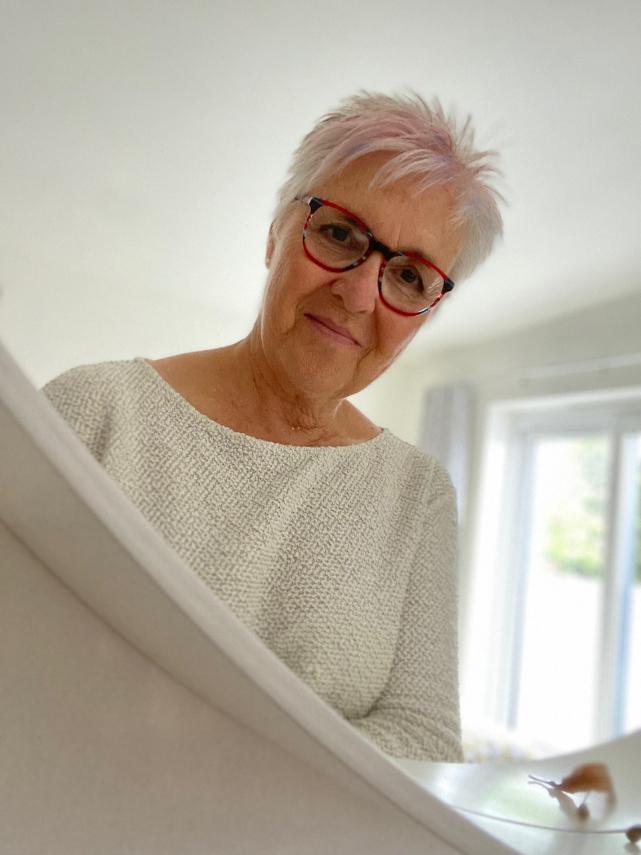
As I write this I am sitting up hoping that tonight will be clear enough to see and photograph the Northern Lights. I noted that some of you posted your images on the Facebook from last night but with cloud cover where I live I was unlucky - tonight we have a little cloud so fingers crossed. Given only a couple of years ago I was considering spending money to go to (say) Finland to see this spectacle, to now be able to see it for zero cost is a bonus. This got me thinking about what we do to our planet in the pursuit of our image making.
One thing that impresses me enormously is that which the Landscape Group are doing on this topic. https://rps.org/groups/landscape/climate-change/ It is well worth reading this especially if the style of work you like doing has the greatest impact. Fundamentally they support a UK based carbon offset organisation https://www.forestcarbon.co.uk by adding a small charge to their event ticket prices.
With one or two exceptions DI is now pretty much an online group with few face to face meetings. The exception is the Southern Centre meetings and the T-W-T project which we do run with Landscape. Perhaps our other issue is the printing and distribution of DIGIT and the Print Portfolio. As all of these are popular with our members I need to say right now that none are under threat, but what I would ask of you is to consider your own impact and, if you feel inclined, to perhaps take a leaf out of Landscape’s book and consider how to lessen your impact or how to balance it out in some small way. Possibly even plant a few trees yourself or join a scheme that does.
Personally I am delighted that DI is now so online centric. It means we can reach a wider membership and bring in some amazing speakers from over seas, making us truly international. Many years ago when working for BT, at the very start of the development of the internet, I recall one discussion we had we talked about the ‘death of distance’ - today I finally feel that we can achieve this for the majority as we embrace technology and the benefits it brings us.
Janet digchair@rps.org
Images from Avril Jones via Facebook - shot on an iPhone.
With the latest T-W-T now concluded we are delighted to share with you the eZine which provides one image from each of the walks, plus from our international groups.
The DI/Landscape team are about to have a debriefing meeting and reading all the feedback we have had from walkers and walk leaders. This will guide and shape the project as we start to work towards the next round in the Autumn on Woodlands.
We thank the team, walk leaders and all those who participated in this project and look forward to even more of you engaging with the T-W-T Woodlands in the autumn.
To view the eZine click this link https://issuu.com/digweb/docs/t-w-t_abe_zine
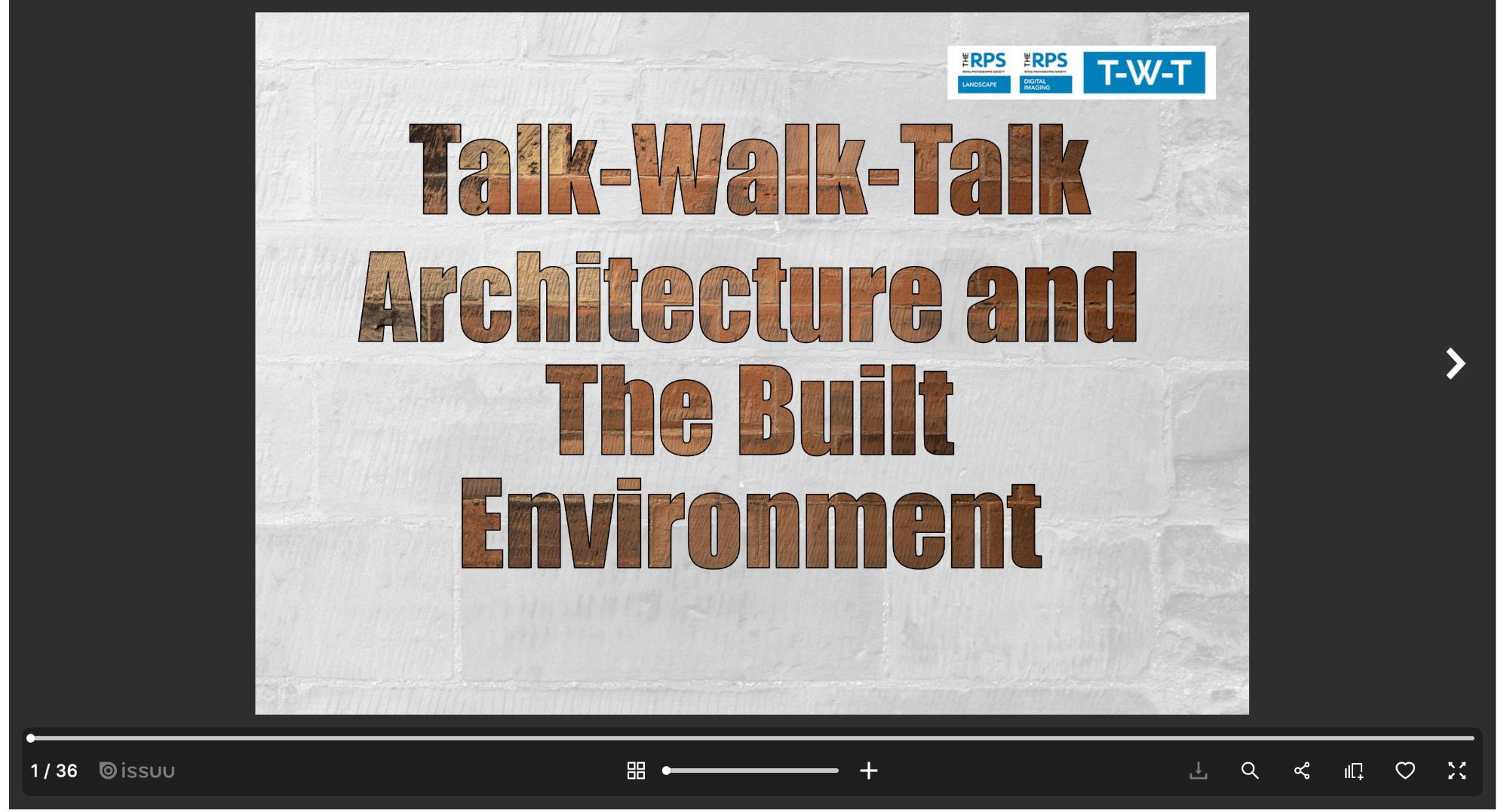
Walk leaders are not required to be knowledgeable in the topic, only have a local wood that they would be willing to share with other photographers in their area.
September 24th @ 19.30 – an online talk from Paul Mitchell FRPS. This is the resource for individuals to learn how to approach taking good woodland shots and to hear Paul’s hints and tips for best results.
Walk leaders determine the number of walkers you are willing to escort. WALKS will be held from Sept 25th to end of October. Each group then holds a TALK discussion session to share their images and choose one to represent their walk in the TWT Woodlands eZine.
For more information or to offer to be a walk leader please email digmem@rps.org
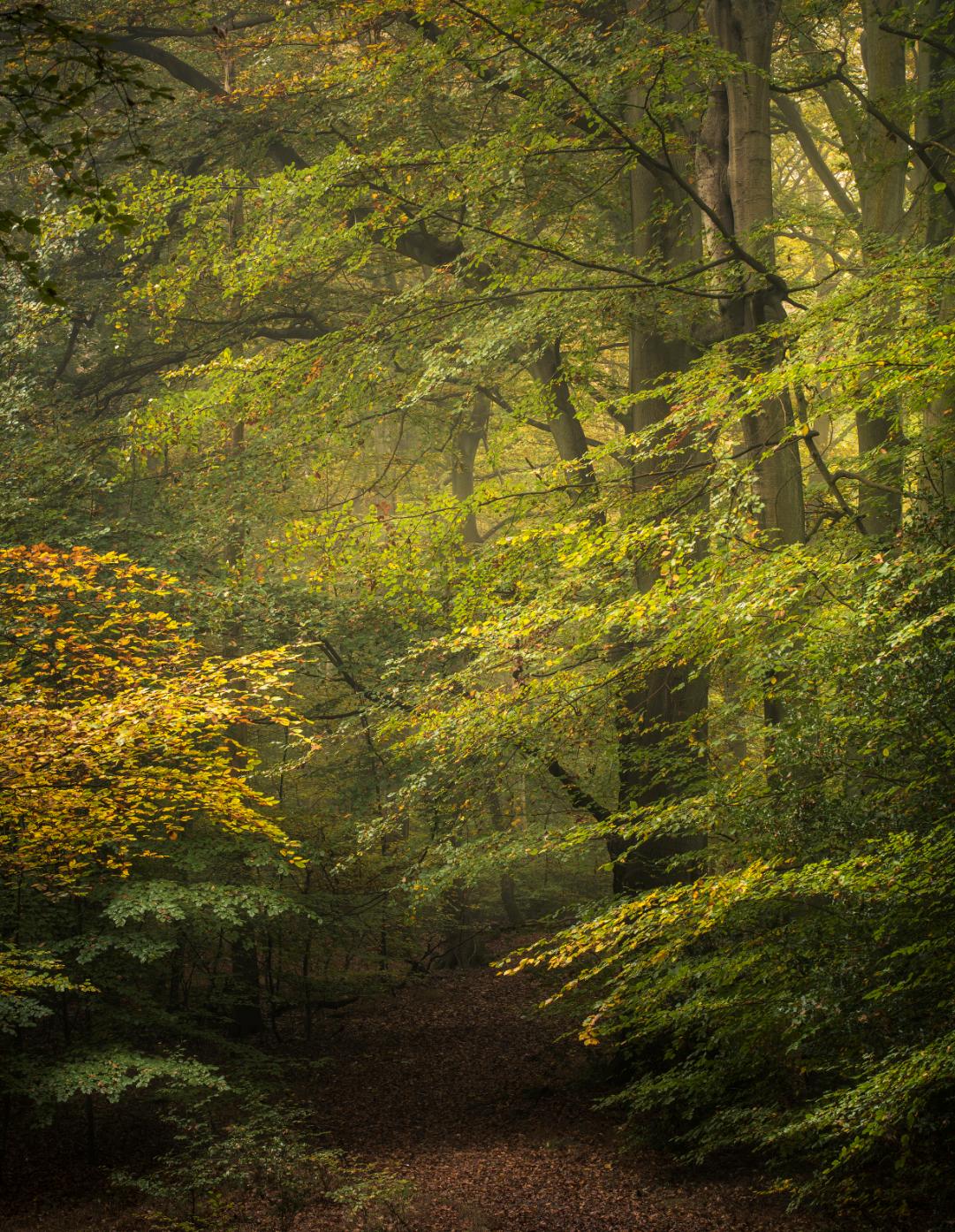
All back copies of Accolade can be found HERE. Production of Accolade is currently suspended but we hope to be able to resume full production later in 2024
It’s often said that a panel finds you rather than vice versa. It’s true in this case. 11 long years after I was awarded my Licentiate I’ve been waiting for inspiration, a sign, for a panel to slap me round the chops and demand it’s assessed.
I’m a firm believer in using technology in the creative process, and so since 2019 I’ve been happily experimenting focus stacking flowers, insects, landscapes, etc., until I had a series of lightbulb moments … What happens if I stack outside when it’s windy? Should I throw away a stack of irises being serviced by a bee? What happens if I post-process multiple stacks together? Can I stack motion? Can I stack handheld? How can I integrate it in my overall creative process? Can I use it in concert with HDR and/or panoramas and/or tilt and shift or fish eye lenses? So much to explore! And let’s not forget blend modes!
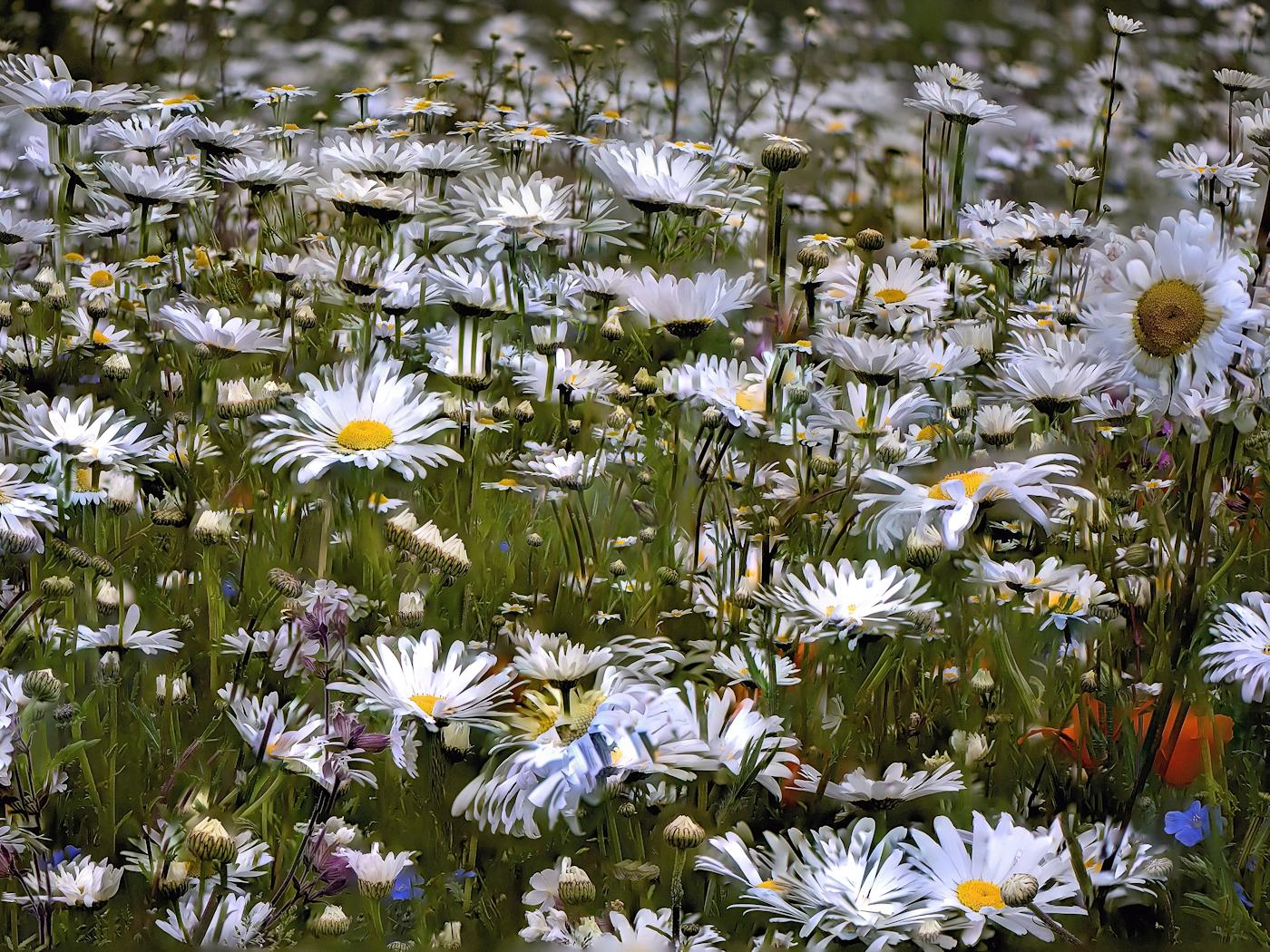

The problem was, although I was enjoying caffeine-fueled fiddling ‘n’ diddling in my “man cave”, how could I take advantage of the technical imperfections in computer programs to create an impactful and visually cohesive panel that would seriously appeal to the artistically minded, the great ‘n’ the good, aka our respected assessors?
I realised that if I used my photos of an abstract nature as inputs to the above experimentations then I could create some really interesting abstract “stuff” that looked unrecognisable from the original ingredients! Although my initial experimentations led to some very intriguing montages, the approach was flawed due to its random results. The use of various techniques, with different types of donor images, had produced a plethora of delightful abstract images, but with little cohesion in terms of form, colours, textures, etc..
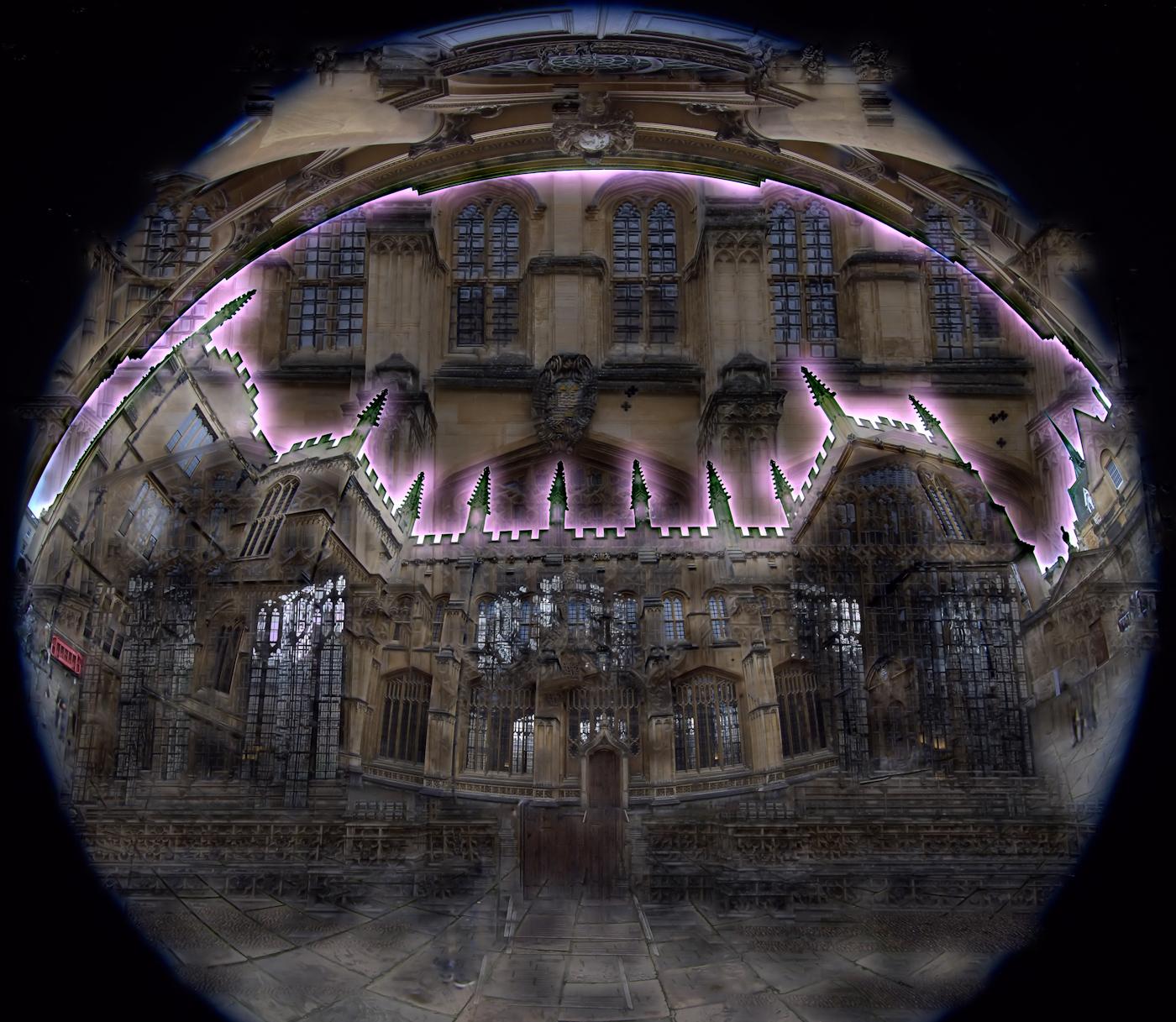

Craving direction I entered a smorgasbord of prints into an Advisory Day in 2022, headed-up by Chris Palmer FRPS EFIAP DPAGB APAGB. I received excellent positive but realistic feedback, giving me direction and inspiration for my ongoing journey.
Concentrating on a subset of approaches, further dabbling provided better quality and more consistent results that were tested at another Advisory Day in 2023. I was very grateful to Viveca Koh FRPS FIPF who provided very positive, supportive, and helpful advice. I was making progress at last.
I realised that besides concentrating on a consistent approach I also needed to curate my donor images to enhance the consistency. I discovered that each (normally late night) creative session resulted in a distinctive subset of results. Combining these two revelations gave me the impetus to create a consistent panel that also provided enough variety to give balance and interest.
After creating many more candidate prints, gratefully receiving advice from John Humphrey FRPS and Mike Kitchingman ARPS, and agonising over which prints to include and in which position, I eventually commenced the assessment process to submit the following panel, displayed over the page.
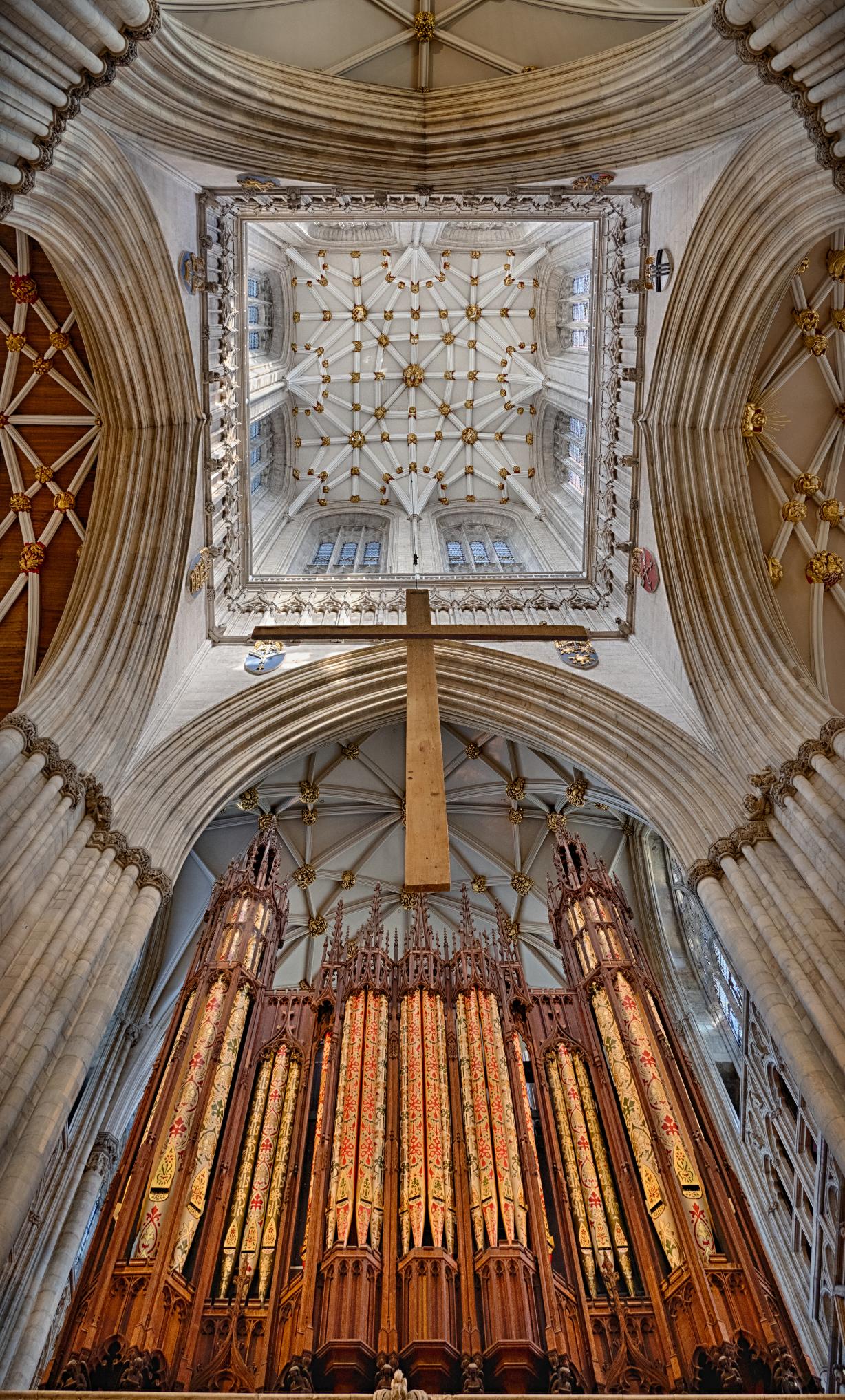


I am fascinated by the serendipitous way in which carefully chosen photographs, with their imperfections, can be blended together in a variety of ways to create compelling and imaginative montages, unrecognisable from their origins.
This panel aims to illustrate the results of transforming photographs into a striking and distinctive panel that is harmonious, balanced, and rich in artistic elements.
Influenced by artistic styles such as geometric abstraction, abstract art, and cubism, my vision is to inspire fellow photographers to enjoy experimenting, to create panels where the results are typically fascinating and always unique.
Hopefully viewers will appreciate that the first and the last columns are slightly darker and have mustard overtones, thus “bookending” the panel. Pairs of prints endeavour to balance each other. Patterns persist across the panel. Some have brush strokes while others have textures. There are 3D aspects. They all enjoy charming facets that are part ‘n’ parcel of the technical imperfections integral to the creative process.

I am honoured that the assessment panel, consisting of Martin Addison FRPS, Inaki Hernandez-Lasa FRPS FIPF, Andy Wilson FRPS, and Tony Worobiec FRPS, very ably chaired by Chris Palmer, awarded my panel the Distinction of Associate. For me it was a very emotional experience – yes, I shed a tear. My overriding memory was of Martin mentioning that while driving home after a long day of assessing, he was sure that my panel would be the one he’d remember the most.
What does the future behold? Will I have to wait another decade for another revelation? Will another panel “find” me? Time will tell, and in the meantime, and as a well-known Lord says, “the search continues”.
Steven Galvin ARPS
http://StevenGalvin.Photography
MAY 1ST VOTING OPENED FOR ROUND 4 SCAPES

We have a very wide and varied submission of work, so choosing and voting on your personal top 3 images is going to be a challenge. Consider the topic – Scapes – and ask yourself if, in your opinion, does an image meets that criterion. Enjoy looking at everyone’s work – there are 3 pages to scroll through.
To vote go to this page HERE Scroll down to view and vote on three images. There is even some information on that page to tell you how to vote, plus links to view the winners from rounds 1 to 3.

Round 5 is Architecture and your last chance to enter and be in with a chance to be in the final 6th round.
Maybe you have some recent work from the Talk-Walk-Talk project. If you have yet to take your winning shot then there’s still time as submissions open on 1 June.
A date for your diary for Round 6 – the final. Friday 2 August at 16.00 via Zoom. Your selectors will be Martin Addison FRPS, Mark Reeves FRPS and Carol Olerud FRPS. Information about the final and links to book will come out in next months DI Online.

LONDON, UK, 1 May 2024: Fujifilm today announces the grand reopening of its FUJIFILM House of Photography in London on Friday 31 May 2024. The renovated space will launch with an exciting programme of immersive events, as well as refreshed facilities and services – demonstrating the company’s ongoing commitment to its growing creative community.
Planned events include secret live music gigs, fitness classes, panel discussions, workshops with photography experts such as Capture One, and talks from high profile industry figures including Alan Law and York Place Studios. There will also be guided photo walks to capture London’s most picturesque landmarks, as well as lesser-known spots.
The FUJIFILM House of Photography, located at 8-9 Long Acre, Covent Garden, was the first store of its kind to be opened in the world, originally launching in 2019. The renovated space will include:
▪ A redesigned print workshop
▪ A FUJIFLM School learning space
▪ An extended gallery space
▪ Dedicated areas for the company’s professional GFX medium format system and X Series digital camera range
▪ An updated photographic studio with professional headshot services for talent such as actors, models and dancers
▪ An all-new book shop offering key titles for photographers and creators
▪ An INSTAX Creator Cube booth, for visitors to capture fun, infinity room-style content
▪ Kit and product loans for photographers to try before they buy
Ahead of the FUJIFILM House of Photography’s grand reopening, Fujifilm is also calling on people across the UK to enter its ‘Life As You See It’ Photo Competition. The first prize will be a FUJIFILM X100VI Limited Edition digital camera worth £1,934. There are also prizes up to a value of £500 for the second and third placed winners. Budding creatives, amateur snappers, photography professionals and everyone in between will be invited to submit up to five images that they feel capture ‘life as they see it’, from the beautiful and powerful to the mundane and trivial. The photos can represent almost anything: daily life, democracy, torn sweaters, boring Sundays, friends’ antics, raised eyebrows or just whatever has caught their eye – the beauty lies in that it is completely open to interpretation.
The competition is open for entries between 1 May and 14 June 2024. All three winners will have their photos exhibited in the FUJIFILM House of Photography gallery, as well as being featured in a new Fujifilm brand film. The brand film will premiere on 28 June at the FUJIFILM House of Photography, with the winners announced on the same day. To enter, and for more information on the competition, please visit https://www.fujifilm-houseofphotography.com/blog/item/life-as-you-see-itcompetition/.
Those who are participating in the Books and Zines project are being given the opportunity to have their ‘work in progress’ uploaded on Issuu, to see how it looks. Also, when happy with the completed Zine they will be able to share it on Issuu to a wider audience.
Do have a look! https://issuu.com/digweb
WE HAVE A NEW FACEBOOK PAGE FOR ‘FROM SEED TO BLOOM’
This is a group for those interested in the DI ‘From Seed to Bloom’ Project 2024. It is intended to be for members to ask questions, and share information about Gardens to visit, Flower Farms we could go to photograph, exhibitions of interest and to share your Flower and Garden Photography.
https://www.facebook.com/groups/2093842637659612/?ref=share_group_link
The German Chapter always produces a brilliant online eNews and their most recent one was superb, so much so that we asked both the Editor and photographer if we could feature ‘Underground Portraits by Wolfgang Strassel FRPS’ in DI Online. We have permissions from both to share this but to cram it in to 2 or 3 pages seemed a crying shame, so better we link to their eNews for you to see it there in its entirety https://issuu.com/royalphotographicsociety/docs/rps_deu_emagazine_q1-2024-issuu
What I found so fascinating is from just the feet and legs of someone how you can read a story into that person. Every single image Wolfgang includes is unique and so well spotted. Not sure how many hours on the Jubilee Line or how many images he took to achieve his selection, but he has certainly given us something worthwhile viewing. We show but a few here but there are many more to enjoy.
Wolfgang is having an exhibition of these images in London. Dates 4 to 7July. So if you live in London or are visiting do go to the Photobook Cafe Gallery.
In the same eNews is also some great work shot in the Munich subway. They have some amazing stations there.
Janet HainesI have always been interested in social systems and how they determine the characteristics and conditions of human existence and, thus, my existence in this world.
This interest also determines my motivation as a photographer. I am fascinated by spaces and environments because they reflect certain aspects of human existence and our interactions within the prevailing social systems.
These spaces and environments sometimes present contradictions and inconsistencies that I sense and feel but cannot always fully recognise and express. Photography grants me a deeper insight into these complex realities and my existence as a human being. It offers me a means of understanding and connecting with this world that exceeds my rational analysis. It allows me to express such insights in a way that I could not do in words or otherwise.
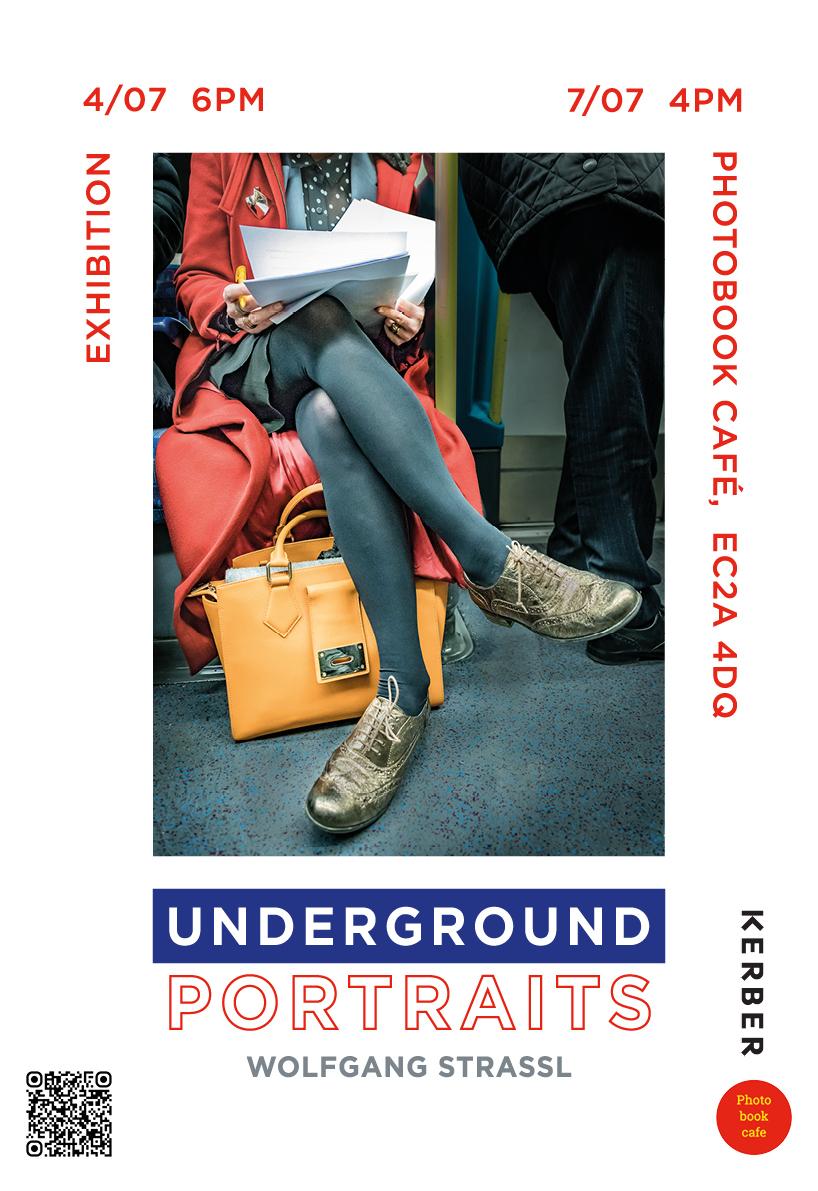
With my Underground Portraits, I am exploring the unique social space of the London Underground. London is probably the most cosmopolitan city in the world, and this is vividly reflected in the London Underground, where people of different ages, social classes, religions, colour, nationality, education, and sexual orientation sit and stand next to each other, coexisting as equals in all their diversity and individuality. Thus, in the most cosmopolitan city, the London Underground is probably the most democratic social space. My Underground Portraits are celebrating this uniqueness.
Apart from this, the Underground Portraits are a study in portraiture that explores what people’s visual appearance tells us about them, or rather what and how much we are able to see, recognise, and understand.

While the human face is usually the critical element of any portrait, I doubt that facial features reveal much about a person's character. I think this is an illusion, and what we see in people’s faces is essentially our projection.
With the Underground Portraits, I am exploring what we see when looking below the face, where people’s visual appearance is largely determined by their conscious or unconscious decisions about how they want to appear. They may fail to create the intended visual impression on others, and it is instead their intentions that become apparent, but this is equally revealing about who they are.
I call them Underground Portraits not only because they were taken on the London Underground but also because their focus is below that of most other portraits.
Just a taster, to see it in its entirety click this small image. Wolfgang’s website: https://wolfgangstrassl.com



Exhibition: Underground Portraits
Venue: Photobook Café gallery
Location: 4 Leonard Circus, London, EC2A 4DQ
Dates: Thursday 4th July 2024 – Sunday 7th July 2024
Viewing Hours: Thu 6pm – 9pm, Fri 9am – 9pm, Sat 10am – 9pm, Sun 10am – 4pm
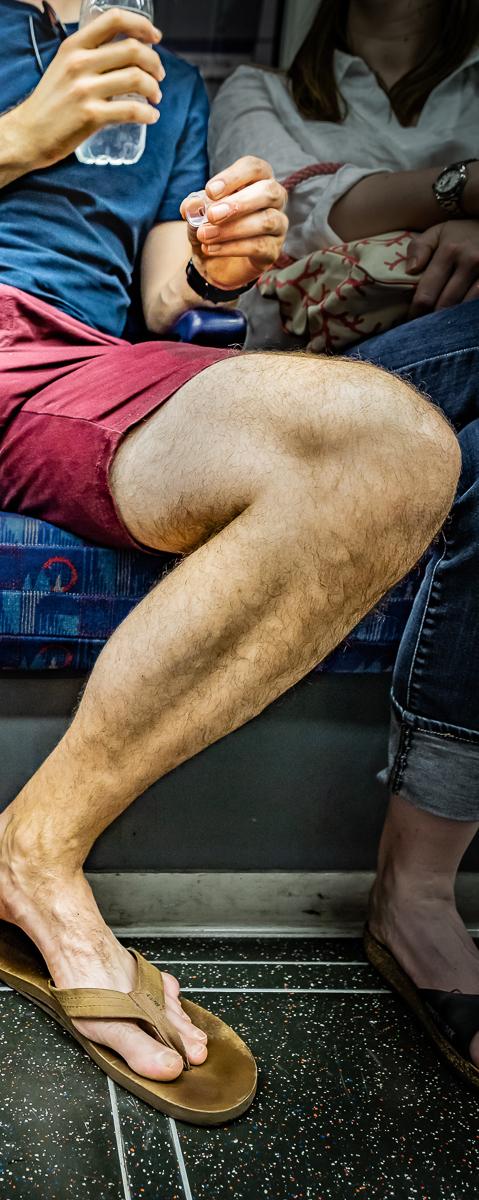
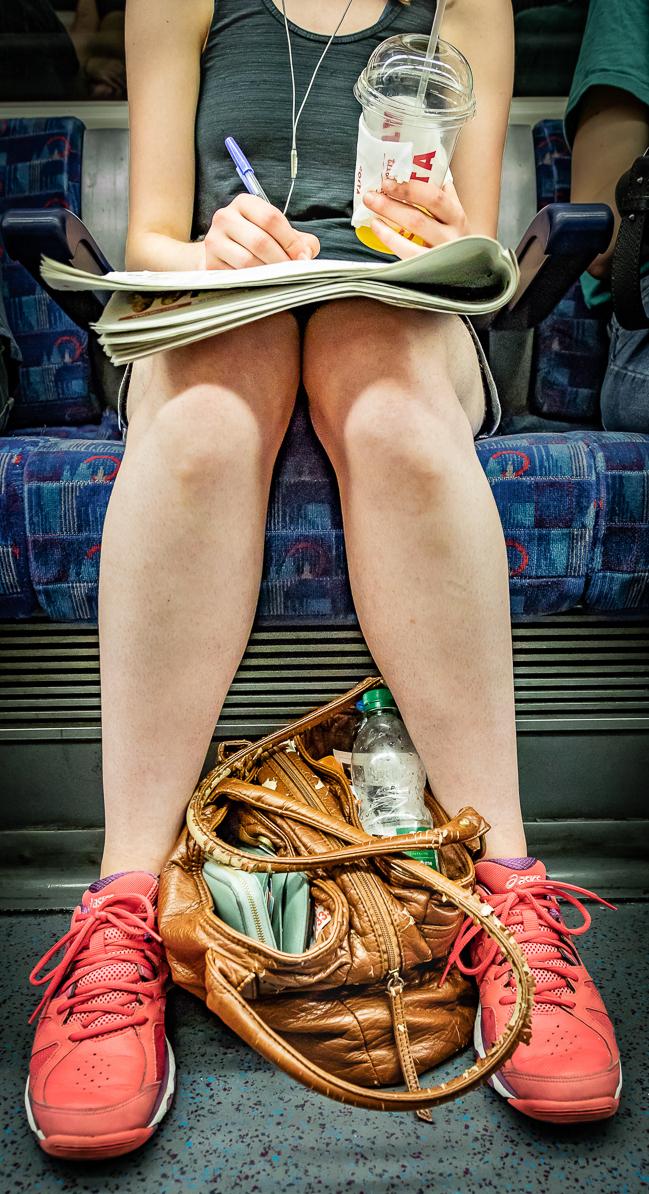
We thought you might like to know and see what happens to enable you to enjoy printed DIGITs. Our Printer, Henry Lings of Dorchester, kindly took photos for us as DIGIT 100 went through their processes.
Before we get as far as the printers there is always the challenge of persuading individuals to produce quality articles for us. This has to be done many months in advance so that contributors don’t feel under pressure. It also allows us to endeavour to get a balance of articles per issue. Given DI is not genre specific we like, where at all possible, to cover a wide variety of topics. If you feel we ignore a specific topic then do tell us and we’ll see what we can do.
Having collated all the articles, images and adverts it all goes to our Editor, Gary Beaton, to work his InDesign magic. Over the years the layouts and styles change subtly; have a look back at the DIGIT Archive copies and you’ll soon notice these. Each article goes back as a draft to the author for approval and any required changes. Choosing the cover shot is always important for Gary. He likes them to be impactful, but to relate to one of the articles. Often this necessitates working with the photographer to agree crops or small modifications to achieve the correct ratio. Gary also works closely with one of Lings staff to ensure colour calibration tweaks, so as to achieve the highest reproduction quality - the difference between working with a ‘printer’ and online printing companies.
The final preparation is the very important proof reading. Here we use the DI Committee and one or two other members.
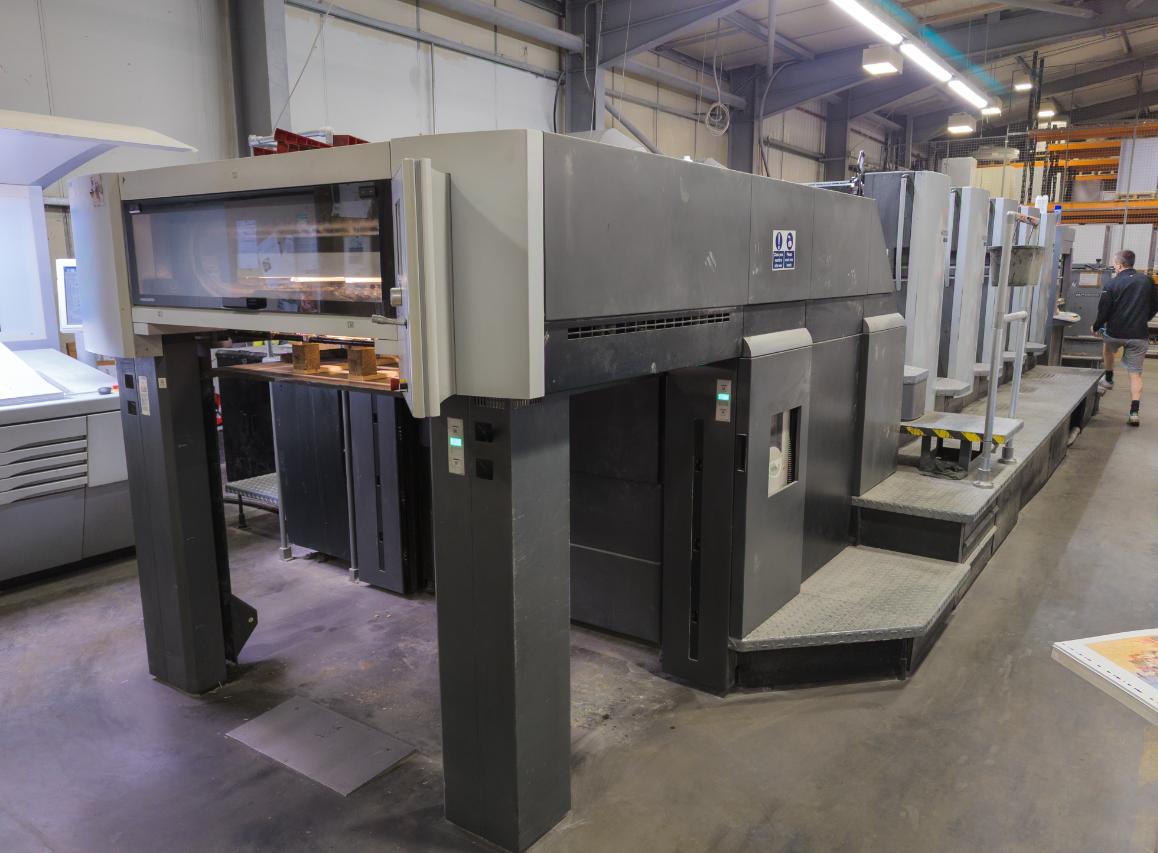
We are now ready to send the final PDF off to Lings for printing. We have to meet specific criteria and it is important that, for the sake of economy of paper, we produce DIGIT in pages with a multiple of 4 ie 28, 32, 36 + the cover. Paper quality is also key. DIGIT is produced with the cover at 350gsm and inner pages 130gsm (Novatech Matt coated). Litho printed.



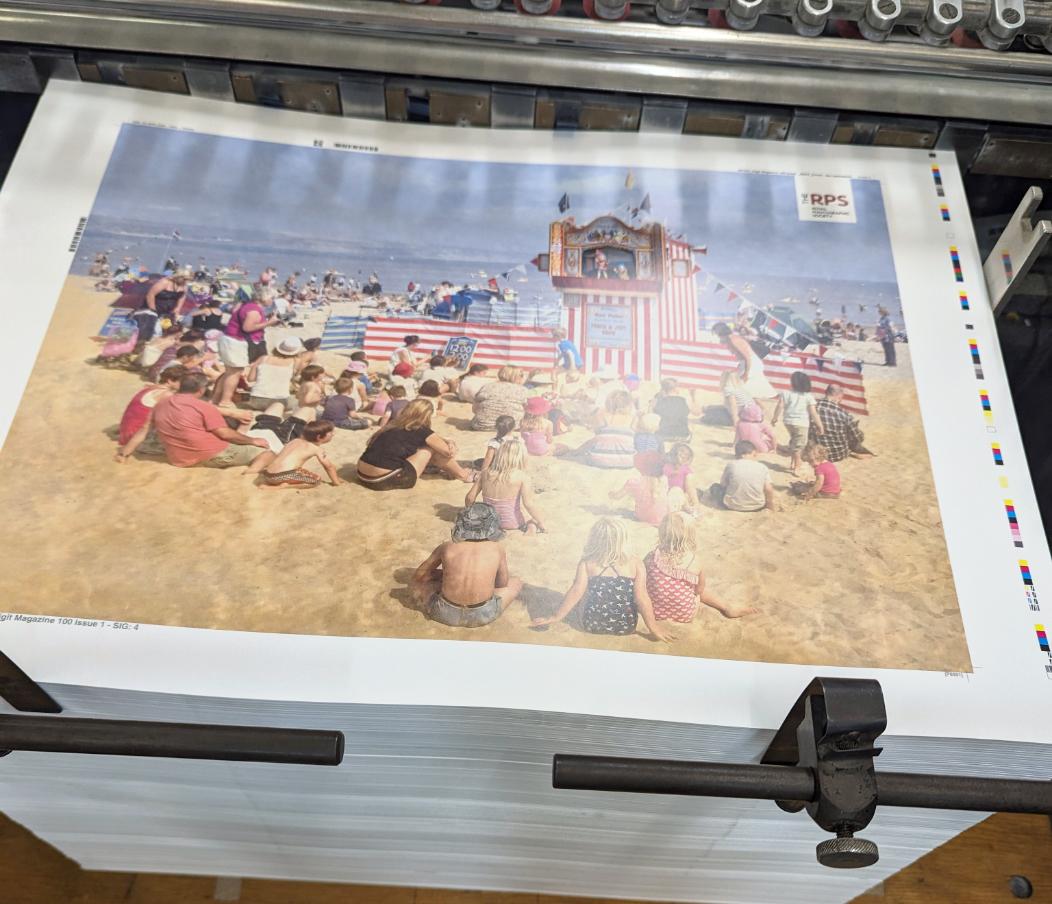
Quality Checking Blocking Picture
Whilst it spins through the printers and they monitor and check quality at every stage, there is the postal list to be prepared. Here it takes a good few hours for a committee member to pull down only full DIG members details from the RPS membership database and reformat that to the template we have to provide to Lings to facilitate address printing.

through production
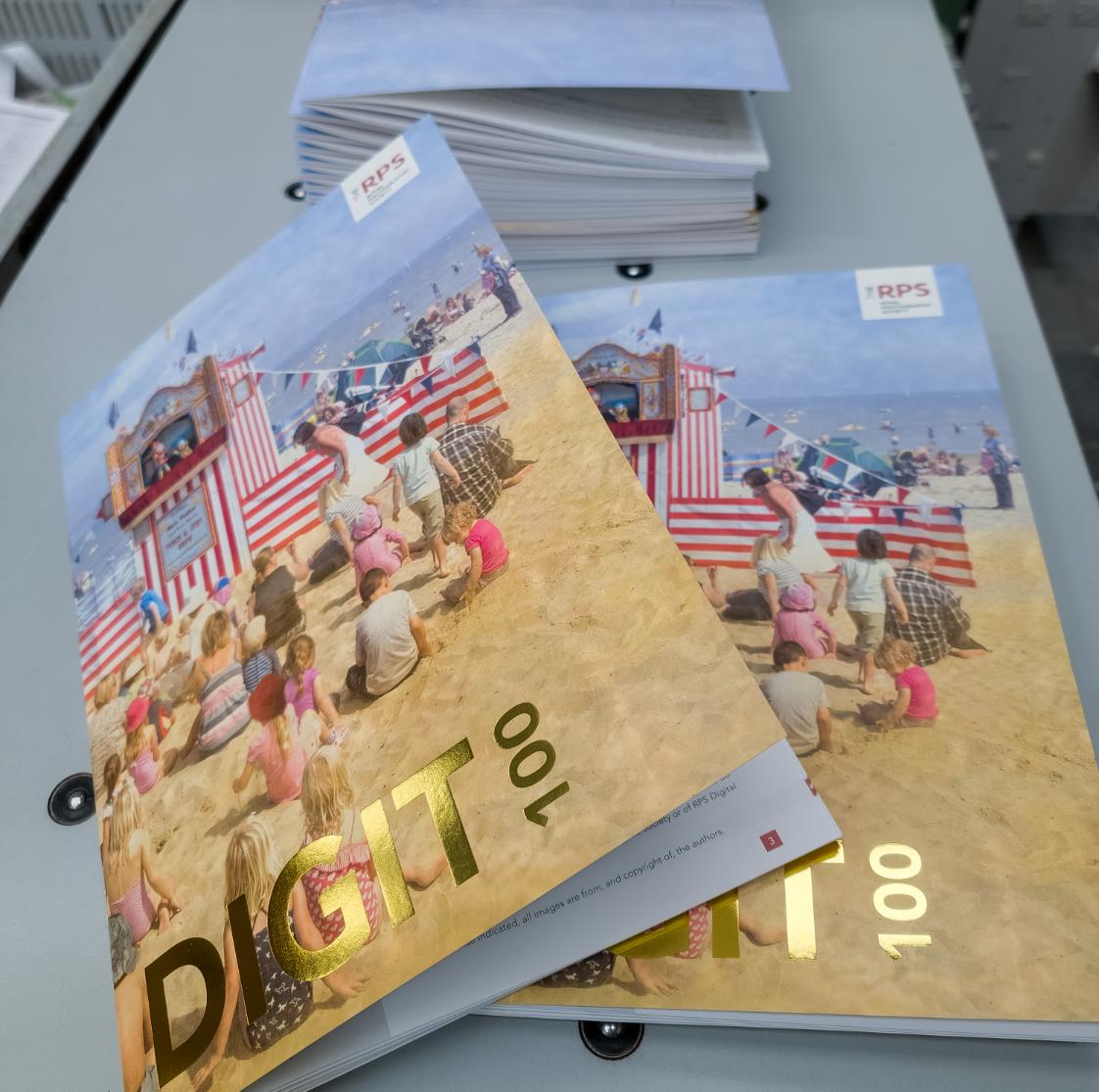
It takes usually a month for editing and another 3 weeks at the printers. We have an agreed schedule with Lings, so it all has to happen on time every quarter. Finally it lands on your door mats for you to enjoy. Ready to Post out
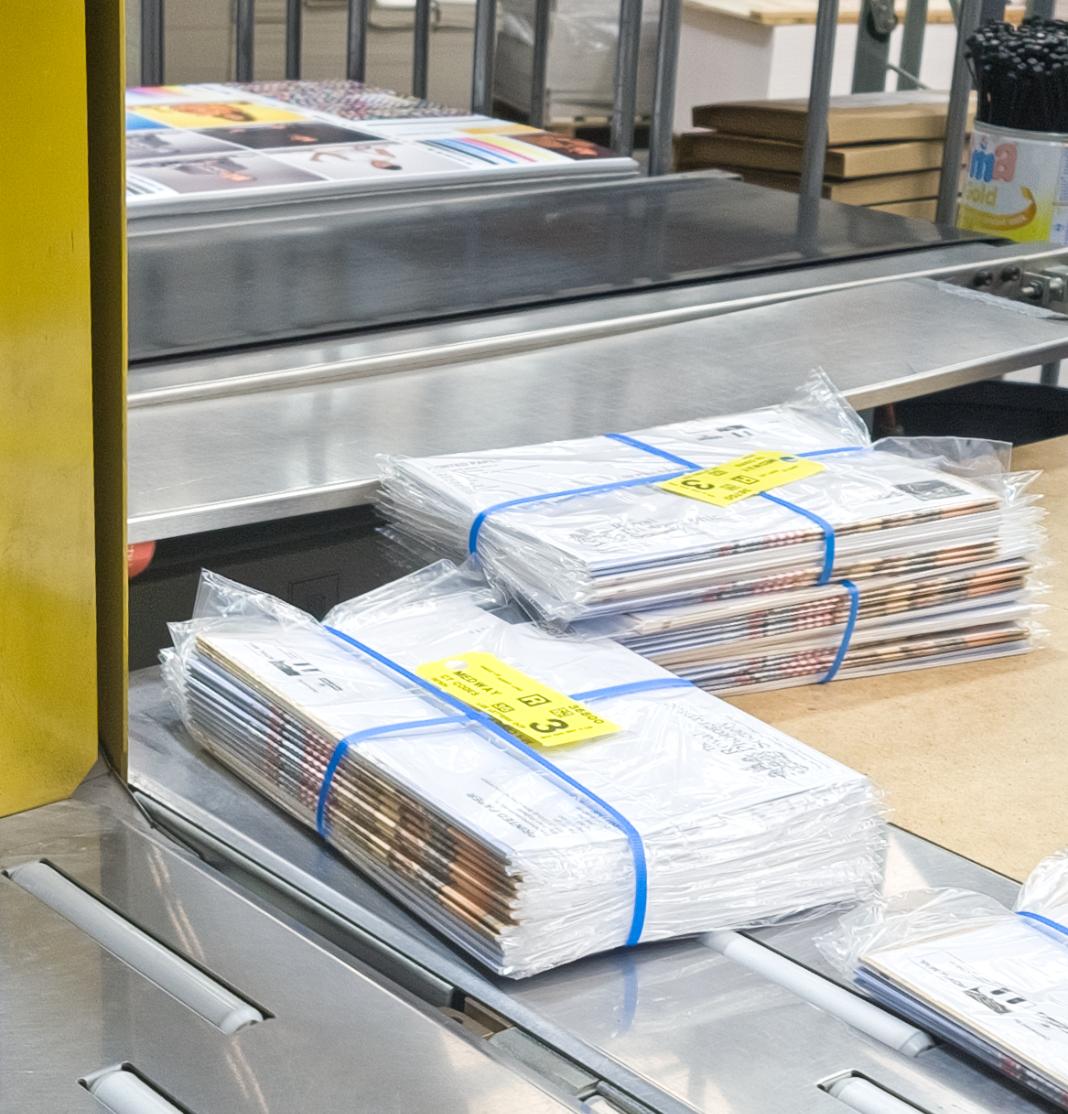

BERT HOUSLEY – 29.9.25 – 21.4.24
The daughter of Bert Housley contacted me to inform me of the death of a long time RPS friend and DIG member, whom many of you may well remember.
Bert joined DIG in 2003 and I first met this lovely man at one of the Rugby DIG events, as well as at a workshop held at Fenton House. We became friends, albeit more through email and the DIG Forum than face to face as he lived in Yorkshire and I in Dorset. However he very generously sent me copies of both the fascinating books he wrote about Sheffield Steel and his part in the cutlery trade there. A self made man who achieved success in just about everything he tackled and the friends he made along the way.
Bert left school at 14 with no qualifications and started learning the cutlery trade at Moseley’s in Portland Works. He proudly served in the navy during WW2. After the war he returned to his trade and began to run the family business, H Housley and Sons Ltd. which he built up from a ‘Little Mester’ knife-grinding workshop to a large company with its own premises.
There are several articles in the DIGIT archive that Bert contributed. The one that particularly caught my eye was in DIGIT 41 (Spring 2009) page 38 where Bert was reporting on his first experience of giving IR a try. https://rps.org/media/i3xisl3s/digit-041.pdf
As we say farewell to this special person we should celebrate with pride a long life well-lived. It was a privilege to have known Bert.
Janet Haines DI Chair
It has become apparent that some members seem to have the wrong end of the stick in regard to what is happening with our group’s publications. Clarification therefore seems important.
The group has three publications, DIGIT, DI Online and Accolade. Let’s deal with each in turn.
DIGIT comes out quarterly and is both printed and online. To avoid you receiving both the RPS Journal and DIGIT at the same time we delayed the publication of DIGIT 100 by a month, so for the remainder of 2024 you will get DIGIT in April, July, October. Full DIG members are currently receiving DIGITs as part of their group subscription which is £14 for 2024. Bear in mind it costs us around £10 p.a. for those members to receive their DIGITs, so in terms of subs full DIG members are only paying £4 towards group funds, whilst online members are paying £7. There is also the complexity of running two types of group subscriptions, which some members find particularly confusing and often end up joining both, with the subsequent admin required to put things straight again.
At the 2024 AGM it was put to the members that we would de-couple DIGIT from the subscription and have just one subscription rate of £8 from January 2025. This was approved by the membership. However this does not mean the end of printed DIGITs as you will be able to purchase these for the year 2025 at £10. We will announce the process to order your magazines for 2025 sometime in the autumn.

DI Online is our monthly online news (11 issues pa. - none in August). This includes updates on competitions, promotes webinars and workshops that are happening in the next few weeks. Keeps us updated on the fast changing AI scene. Plus some member stories and photos. It is published using the page turning software ISSUU and you can download it as a PDF from the ISSUU if you prefer to read it off-line.
Accolade celebrates our members Distinction successes. This has no schedule as such but is produced when we have sufficient material. The same as DI Online it is published using ISSUU and can be downloaded as a PDF.
Accolade is currently suspended due to two factors: the difficulty in getting information from the RPS House Distinctions team on our members’ successful submissions, plus we have lost a key volunteer who used to contact members to get them to write up their Distinctions story and provide their photos. Until we can resolve these problems we are including one Distinction story in DI Online each month, under the Accolade banner.
So in summary only DIGIT is available in print. All other publications are online only. A great deal of committee time is expended on producing these publications for our members. As of 2024 members receive all of these as part of their group subscription. From 2025 all will be available online and for those wishing to receive printed DIGITs you will need to order and pay for them separately.
We are NOT changing anything. We are NOT stopping printing DIGIT. DI membership will be £8 in 2025. Printed DIGITs will be £10 (4 magazines) in 2025. DI online and Accolade are online only and free to all.
This is the web page from which you can access all DI publications https://rps.org/groups/digital-imaging/di-publications/
Each month we will feature an International Member and learn more about them and their photography. Here Janet Haines poses questions to Jason Au FRPS.

Janet: I can see from both your membership number and the fact that you are a Fellow that you have been an RPS member for quite a few years. What made you join in the first place and what is now the benefit of you remaining?
Jason: I joined the RPS in 2021 and completed my Fellow assessment in 2022. For my Fellow assessment, I presented a series of black and white photographs capturing people within the geometric street environments of Hong Kong. My motivation for joining was to attain the RPS distinction, participate in quality workshops and talks, and be exposed to the creative works of photographers from all around the world. The RPS distinction holds recognition in the photography world, and many highly regarded photographers in Hong Kong have also achieved this distinction in the past. Being accepted as a Fellow of the RPS has been a deeply meaningful and fulfilling accomplishment in my photography journey. It adds credibility to my work and represents a valuable recognition of my artistic growth and development. Moreover, the RPS community offers a wealth of opportunities for growth and enrichment. I have thoroughly enjoyed engaging in various activities, such as attending online workshops and talks led by other members and respected photographers, as well as connecting with photographers from around the globe.
Janet: Remembering your time of applying for assessment of your Fellowship panel how difficult was it for you to do this given the support UK members enjoy was not available to you?
Jason: Despite not having access to the same level of support as UK members, I found the Fellowship assessment process to be still manageable. This was mainly because I had already gathered a collection of photographs with a coherent visual style suitable for the Fellowship assessment in 2020. My primary focus at that time was refining my selections and organising them in a logical presentation layout. However, I spent a significant amount of time studying the online resources and guidelines provided on the RPS website, which I found to be very useful. By closely examining successful portfolios from previous years, I gained helpful insights into the requirements and expectations of the Fellowship panel. These resources proved immensely valuable in helping me complete my Fellowship assessment.
Janet: There are quite a reasonable number of RPS members living in Hong Kong do you know any of your local RPS colleagues and can enjoy time working with them?
Jason: The connection between the RPS and photographers in Hong Kong has deep historical roots. In Hong Kong, there is a similar body called the Photographic Society of Hong Kong, which was founded by Englishmen in 1937 during the colonial times of Hong Kong. The Photographic Society of Hong Kong was then affiliated with the RPS in 1938. For the past century, the RPS distinctions have been highly respected by the members of the Photographic Society of Hong Kong. Many photographers in Hong Kong have strived to achieve the RPS distinctions, and their successful portfolios that passed the assessment would be celebrated among peers and featured in local photo magazines.
Fan Ho FRPS (1931-2016), a renowned photographer from Hong Kong and a Fellow of the RPS, has been an inspiration for my decision to embark on my photography journey in 2017 and attain the RPS distinction. His mesmerising black and white street photography, which depicts the streets of Hong Kong during the 1950s-60s, has had a profound impact on my photography style. Discovering that Fan Ho was a fellow of the RPS has ignited motivation within me to strive for the RPS distinction as I pursue my passion for photography. Although there are a number of RPS members in Hong Kong, currently, there seems to be a lack of an active platform in Hong Kong that connects all the RPS members from the region. Therefore, I haven't had many opportunities to work with local RPS colleagues. I would be thrilled if a local interest group would emerge in Hong Kong to foster connections and collaboration among local RPS members.
Janet: Do you see any significant difference between the photography you see in your own country to that generally seen in the RPS exhibitions or Digital Imaging competitions?
Jason: I observe differences in photography styles between my country and those from the RPS, which can be attributed to the cultural influences of photographers from different regions. To generalise these style differences, photography in Hong Kong or China often embraces a pictorial approach that aims to evoke a poetic sense. It tends to play more with light and shadows, and landscape photography often bears a resemblance to Chinese ink painting. Esteemed Chinese photographers such as Fan Ho FRPS, James Chung, Yau Leung, Tchan Fou-li, and Lang Jingshan FRPS exemplify this aesthetic.
On the other hand, based on my exposure to the works of the RPS and DI group, they showcase a wide range of subjects and place a strong emphasis on personal expression and experimentation as they explore conceptual ideas and push boundaries. Their diverse subject matter has been truly eye-opening to me.
Janet: What value do you feel you gain from being a member of a RPS special interest group such as Digital Imaging?
Jason: Being part of Digital Imaging has been valuable in expanding my understanding of the latest photography techniques and trends. One of the highlights has been the series of workshops organised by the group, including the recent T-W-T workshop about photographing the built environment. Engaging in these workshops has been an enriching experience, allowing me to meet other group members and gain fresh perspectives through their innovative works. The online talks and magazines offered by Digital Imaging have also been rewarding, providing me with up-to-date insights into digital photography that transcend geographical boundaries. Being exposed to new works and learning from their unique approaches and styles has served as a source of inspiration for me, fostering both my artistic and technical growth. The resources provided by this group have kept me informed about the latest advancements in digital imaging and continuously honed my skills as a photographer.
Janet: Please could you show us your 2 favourite images you have taken and tell us why you chose these?

Jason: 'Social Distancing' is one of my favourite shots because it clearly represents my photographic style and intention. I am particularly drawn to the geometric form and candid moments of people captured within the frame. This image has received multiple awards and recognitions, including being shortlisted in the Sony World Photography Awards. It was also an award-winning image in the International Photography Awards and the LensCulture Street Photography Awards, and it has been exhibited worldwide. Moreover, it has been featured in UK publications such as The Guardian, The Observer, and The Times. While I consider 'Social Distancing' a work of street photography, I recognise its documentary value as it portrays a surreal moment during the three-year-long pandemic in my hometown.

Another image that holds personal significance for me is titled 'Into the Unknown.' I captured this photo in 2017 when I first started photography. In the bustling urban areas of Hong Kong, stray shadows are a common sight due to the abundance of tall buildings. With this particular image, I explored the concept of dividing a photographic subject precisely in half through welltimed composition. As a passing taxi intersected the boundary between light and shadow, it became split in half. This photograph marked my initial experimentation with the 'decisive moment' in street photography, a term coined by Henri CartierBresson. It refers to the pursuit of capturing the perfect moment when the arrangement within the frame aligns flawlessly.
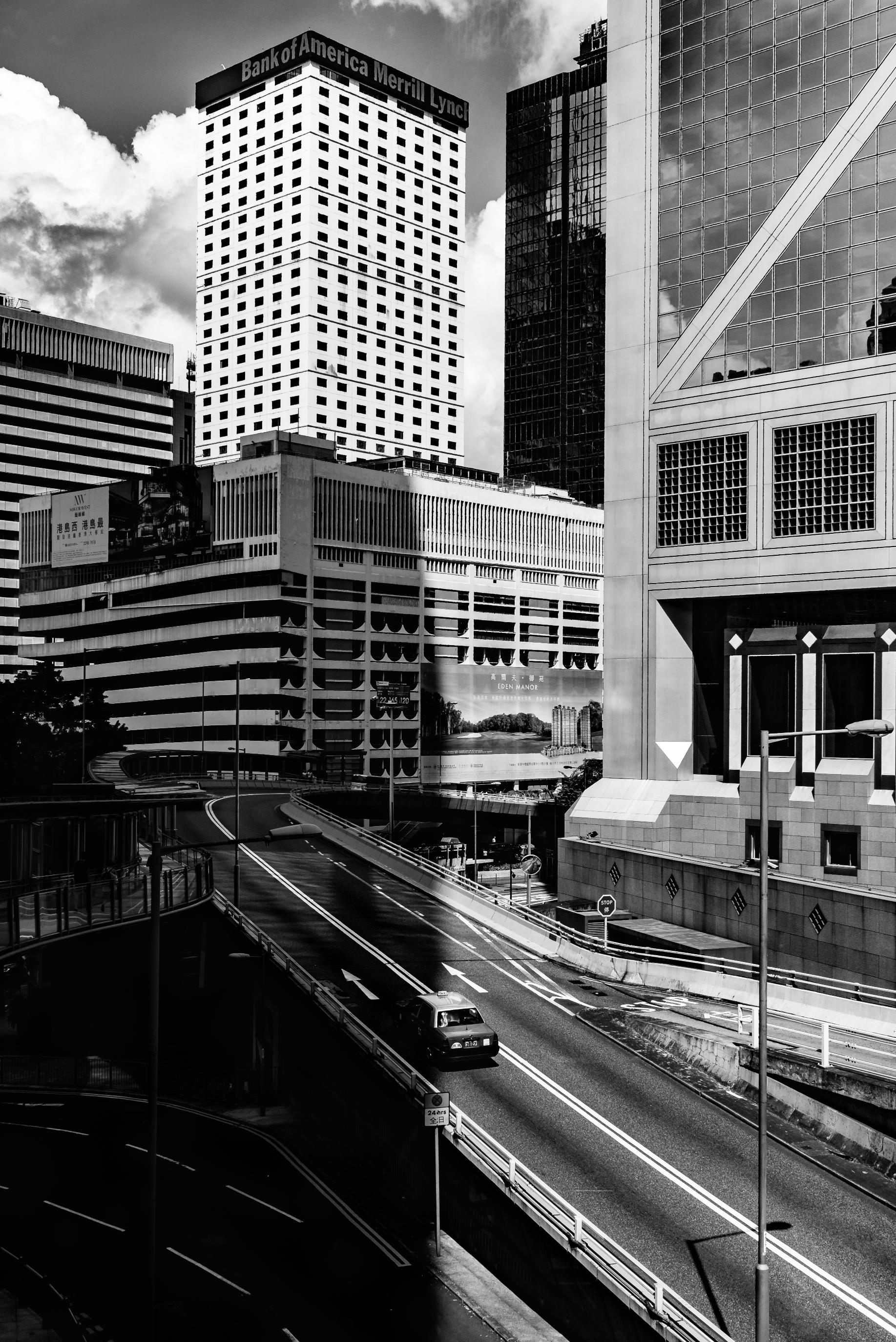
Introducing another member of the DI Committee, Jocelyn Edwards, LRPS our Secretary.
I don’t have a lot of time for my photography as I am working full time, so holidays are when I tend to indulge. One of my great joys of travelling is the chance to get the camera gear out, charge up the batteries and start researching locations, conditions and general advice from photographers who have been to the localities.
Wildlife photography is the area of photography I enjoy the most. While having travelled to many places on the globe, one country, Costa Rica, stands out not just for the remarkable photo opportunities, which were plentiful, but also for how hard the country is working to regenerate its forests and protect and encourage the return of wildlife.
The photography is challenging and it’s worth taking the time to do research before going there. There are a few types of forests in Costa Rica - the rainforests, as the name suggests, receive a lot of rain and the tall trees block penetration of much sunlight. Low light and moisture around the camera were a constant problem. A long lens is recommended to capture the wildlife in the trees. Even spotting them is a team effort due to their incredible camouflage. Shooting into the treetops created problems as there was strong contrast due to extreme sunlight and dark foliage.

Lizard (1/400th, F5.6, ISO200)
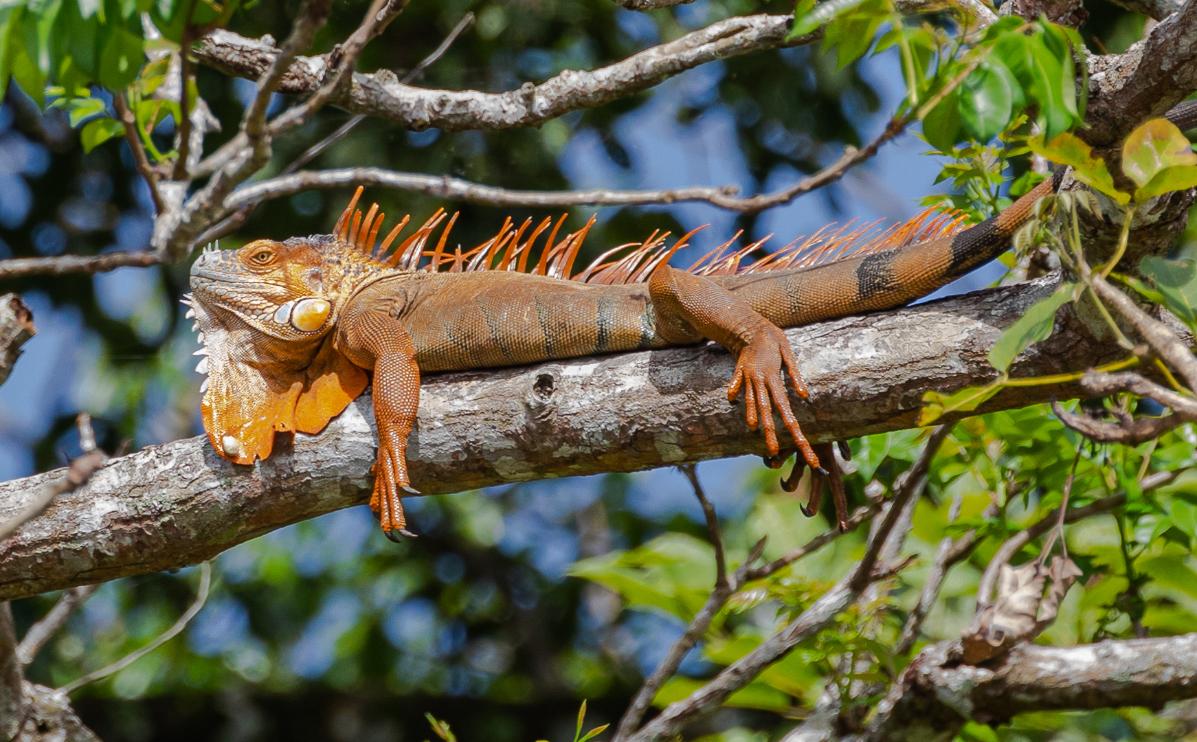
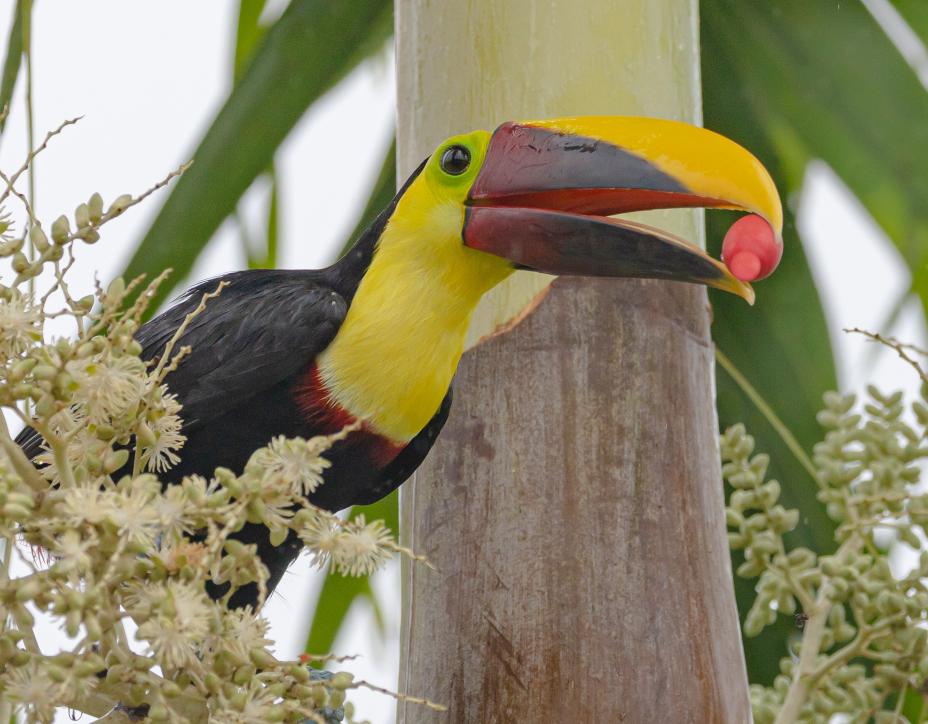
Chestnut-mandibled Toucan (1/1000th, F5, ISO 200)

Resplendent quetzal (1/300th, F5.6, ISO 400)
The cloud forests have 100% humidity and therefore are damp and misty due to being blanketed in cloud. While blessedly cooler, the constant moisture means always having to keep the camera and lens protected, particularly when changing lenses. The dull light pushes the ISO higher while still wanting a high speed to capture the ever-active monkeys. The bird life is stunning. The resplendent quetzal, referred to as the most beautiful bird in the world, feed off the fruit in avocado trees and can only be seen from mid-Feb to July.
We were only able to see and photograph hummingbirds in the rain. I was shooting at 1/1600th (and probably should have been faster) at F4.5, ISO 5000. They are constantly moving and agile, so it helps to consider the background ahead of time. The wings are moving at around 70 times/sec and are flying at more than 20mph.
The tropical dry forests are mercifully less humid and less dense in vegetation making it easier to see the wildlife. The trees abound with monkeys, two and three-toed sloths, reptiles and diverse birdlife. The forest floor had well-camouflaged snakes, spiders and amphibians. It helped working with others to provide light from torches when photographing the nocturnal frogs. We were able to use a tripod as they tend to be fairly stationary.
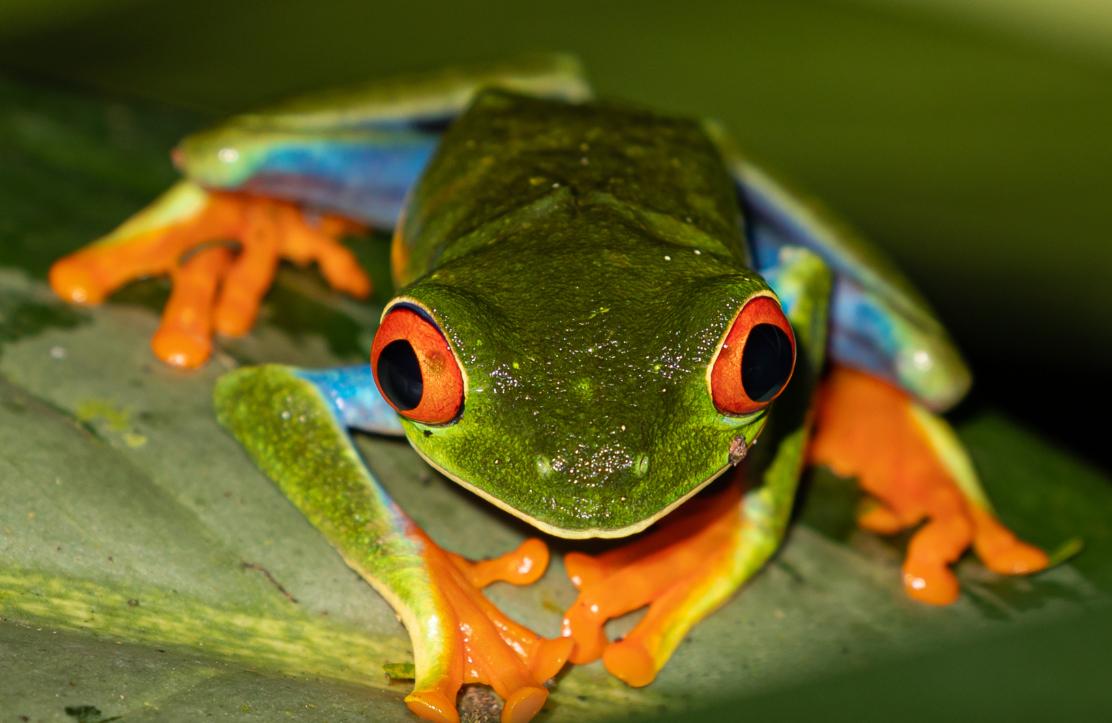
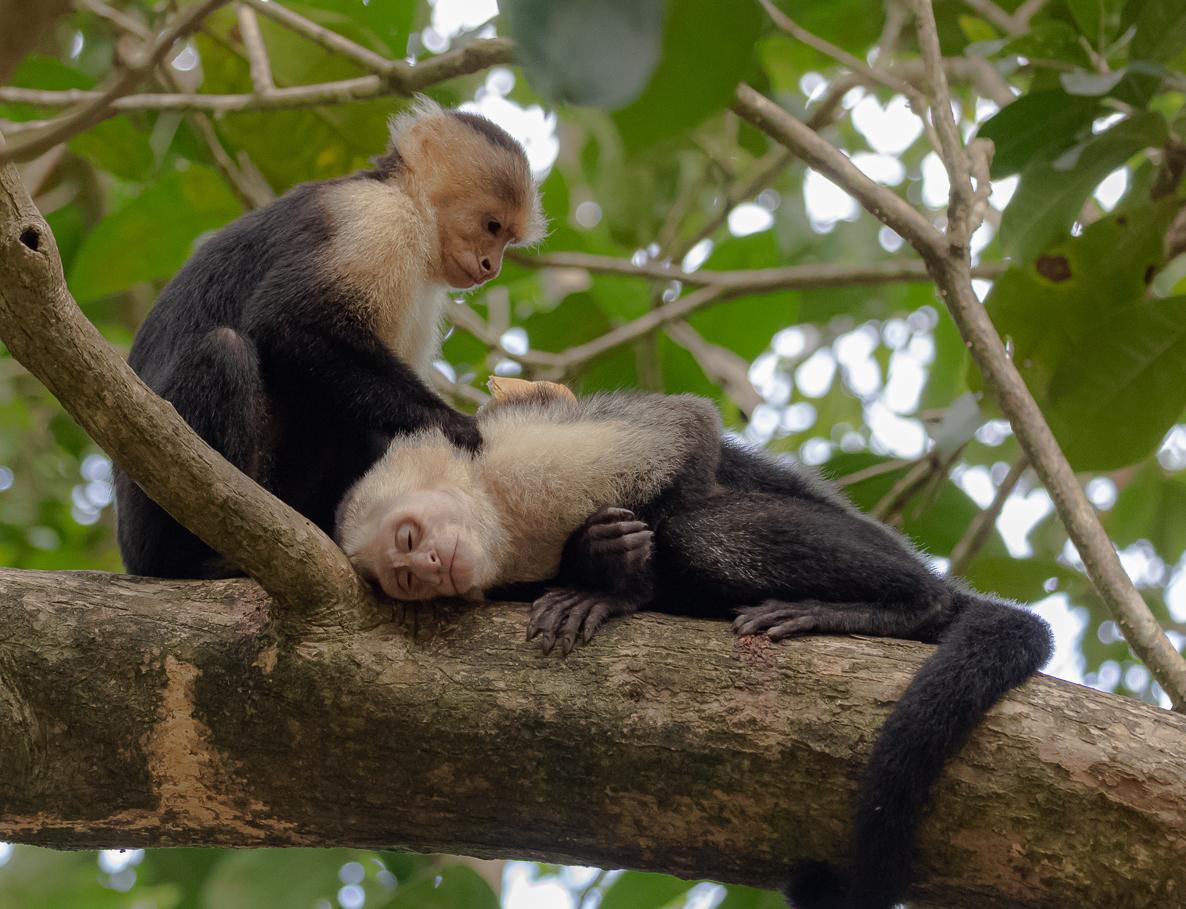
There is so much more that could be said about the photography and the country. I left Costa Rica feeling very proud of their efforts. Now I just need to improve in my post-processing skills to enhance the photos because of the challenging conditions, and to do justice to the incredible wildlife diversity.
Jocelyn
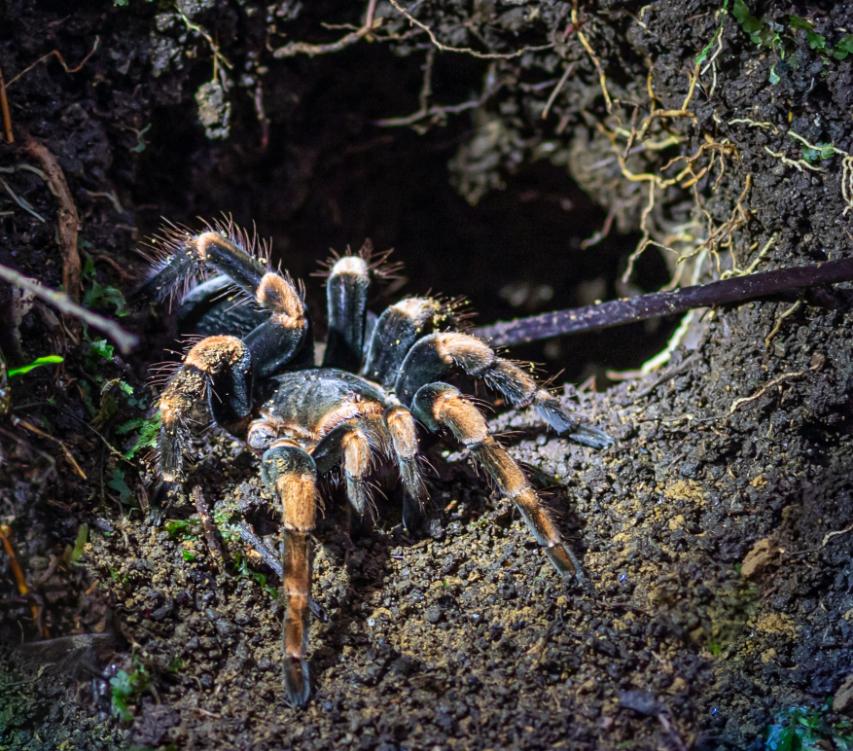
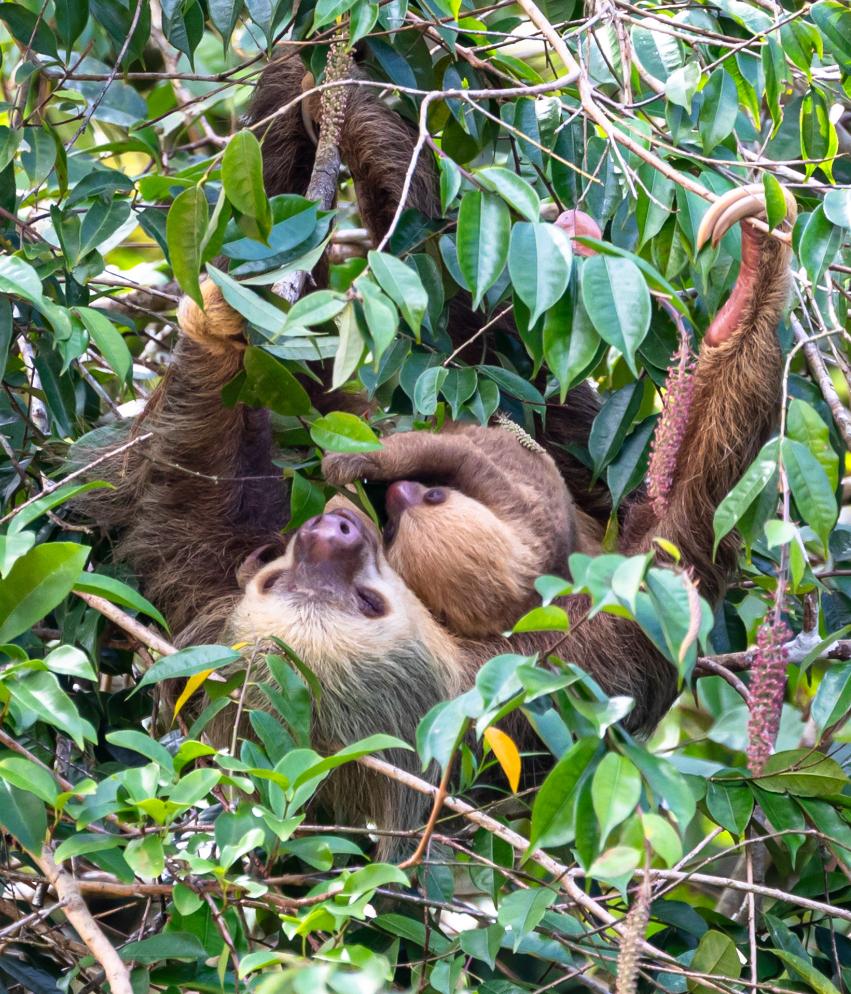
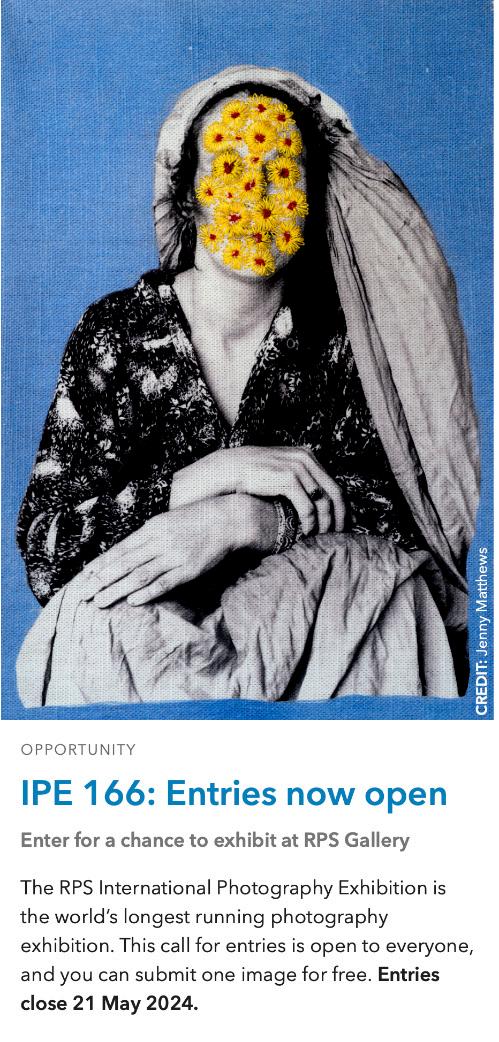
The International Photography Exhibition is a great opportunity for recognition as a photographer. The open call for IPE 166 runs until 21 May. We encourage members to submit images and it would be great if you could spread the word within your group or region. It's free for anyone to submit one image and members get a discount on subsequent submissions.
https://rps.org/ipe166
With the two long term DI projects well underway we are ‘Brainstorming’ what to do next. Both the Books and Zine Project and the From Seed to Bloom initiative have been very well supported by the members and many of the workshops are being repeated. It’s early days for S2B and over the summer months it will continue to flourish and blossom. Many members’ books, still, in many cases, works in progress, are being shared. The process of sharing is so important for inspiration, ideas and for confirmation that one should, ‘Keep Calm and Carry On’ Your thoughts and ideas of what we could cover with our Workshop Programme, in 2025, would be welcomed.
I was very intrigued by Steve Galvin’s explanation as to how he went about creating his A panel. He has created a distinct and unique processing technique to produce his final stunning abstract images. He tells me he has produced a presentation explaining in more detail his thought process, I am thinking it would make an interesting talk for DI in the Autumn?
Melanie Chalk Editor DI ONLINEQuite some years ago, when my Dad died, I inherited all his negatives and slides. I gave myself the enormous task of digitising every single one of them! I started by looking as each one, to see if it was even worth scanning and I soon realised how slow that was going to be! So I just scanned the lot, to decide later what was worth keeping.
I only used our printer/scanner – no special equipment – It was magical to see all these family photos and to be able to store them on my computer and my iPad. The colour slides were a different matter – I bought a second hand Nikon Coolscan Slide scanner from a member of the South Manchester Camera Club –where my Dad had been a long standing member. The ‘shiny’ side of the negative has to be placed onto the scanner bed and using Photoshop’s File – Import Menu, chose VueScan software to open directly in Photoshop. In some cases you can just choose your own printer from this menu. I didn’t really do any editing until I had got though the 1000’s of negatives – it took a long time, and I did a batch nearly every day! Then I did minimum of editing in Photoshop I.e. Straighten and crop, and Filter – Noise – Dust & Scratches. I used the clone tool and the spot healing brush anywhere else it was needed.
Of course, having so many, I was selective in what I chose to edit. The images were not new to me because my Dad had meticulously made beautiful family albums, titling everyone with white ink on the brown album paper. Move on to 2023/2024 and I advance from CS5 to the subscription Photoshop and all it has to offer! I watched a Celia Henderson presentation (have seen many and admire her and her excellent teaching) and Neural Filters were covered, including the Photo Restoration area. I had to try this as soon as the presentation ended, and chose a few family photos and posted them on the RPS Digital Facebook page.
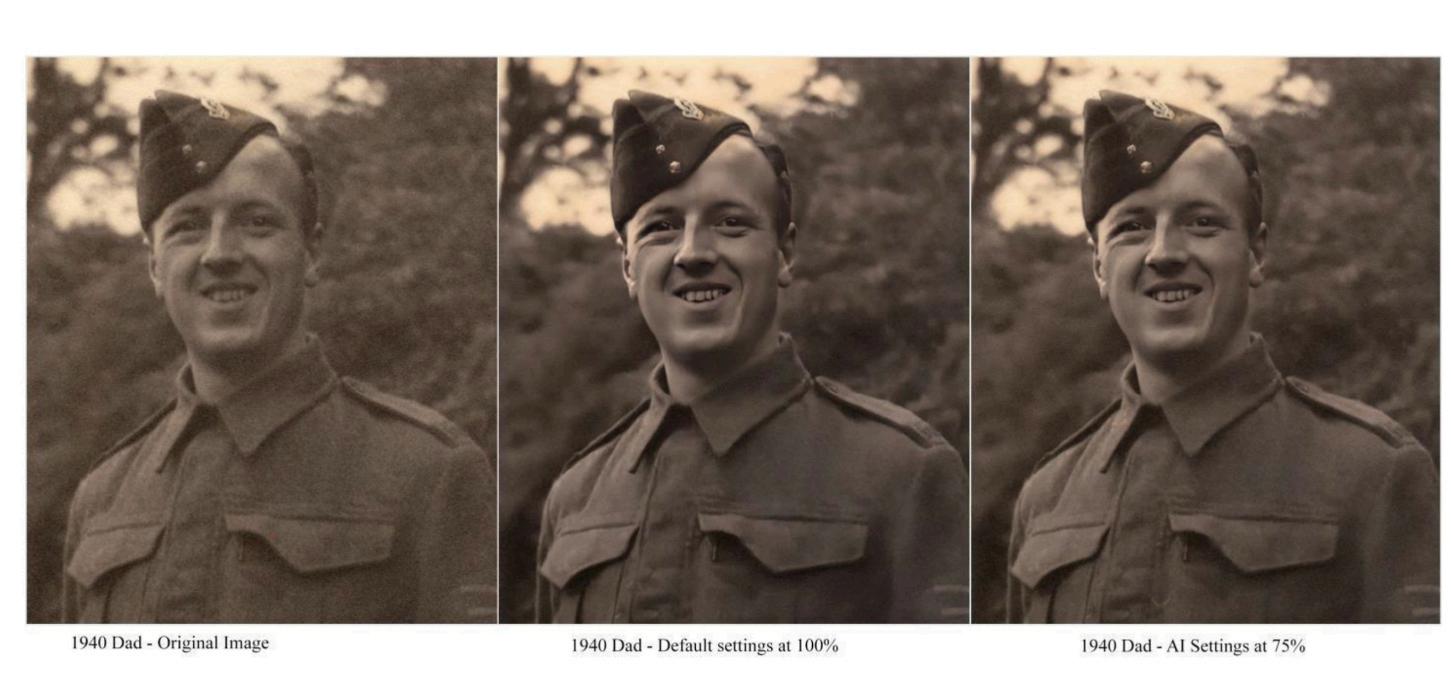
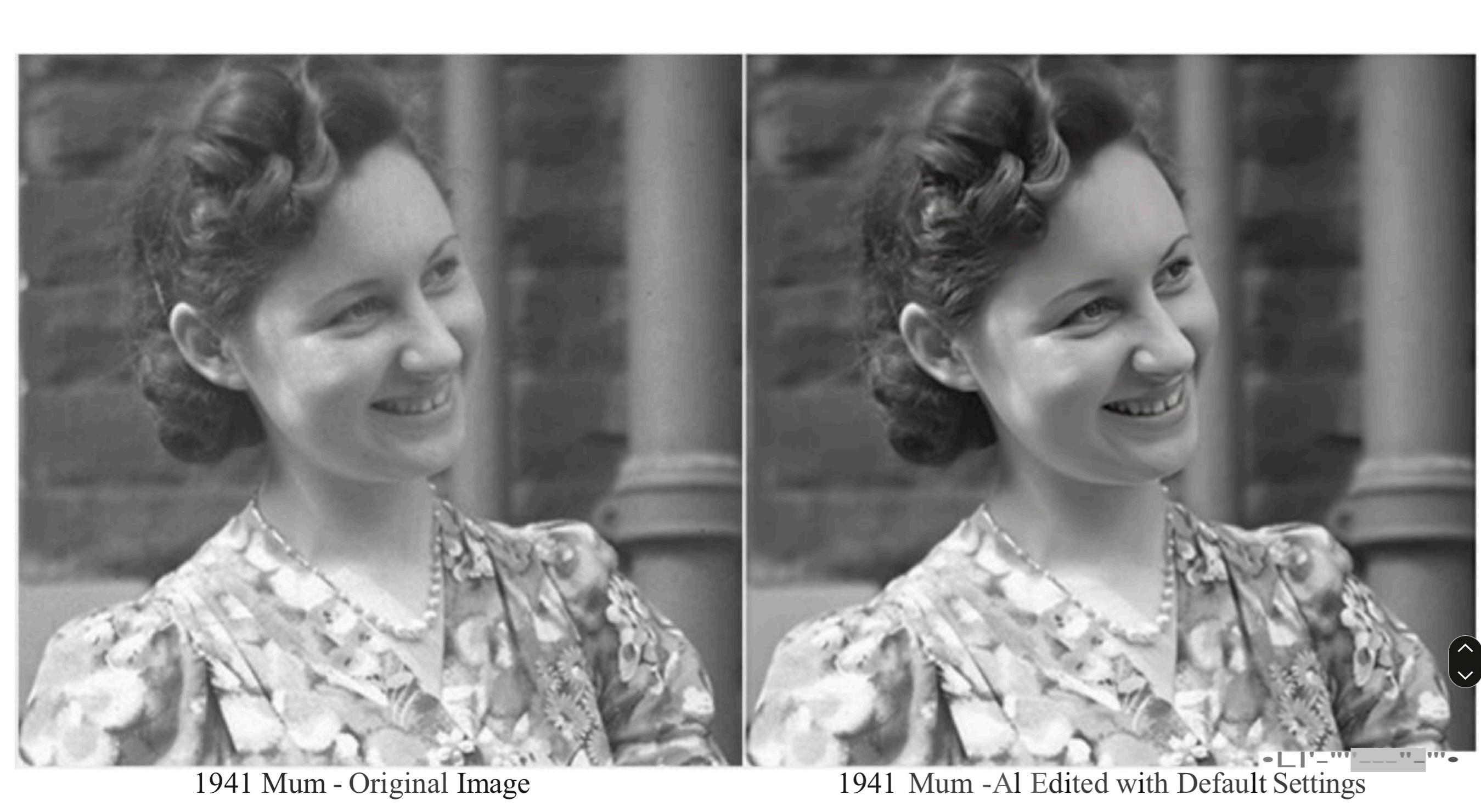
This Filter is accessed via Filter – Neural Filter, each of the filters you want in this section need to be downloaded before you can use them, simply click on the Cloud button. I have only used the Photo Restoration so far – though I do intend to try some of the others sometime.
There are only two sliders in this section – Photo Enhancement/Enhance Face and Scratch Reduction I have so far, left mine on the default settings/numbers. 50/60/0 respectively.
I always work on a duplicate layer, to be able to adjust the filter. The last image I did was rather too aggressive, so I lowered the opacity of that layer whilst in Photoshop made it a bit less AI. In one case, it removed part of my mum’s necklace, so with the original layer and a layer mask on the edited layer could bring it back again. The two layers can now be flattened and duplicated for any further editing required in Photoshop.
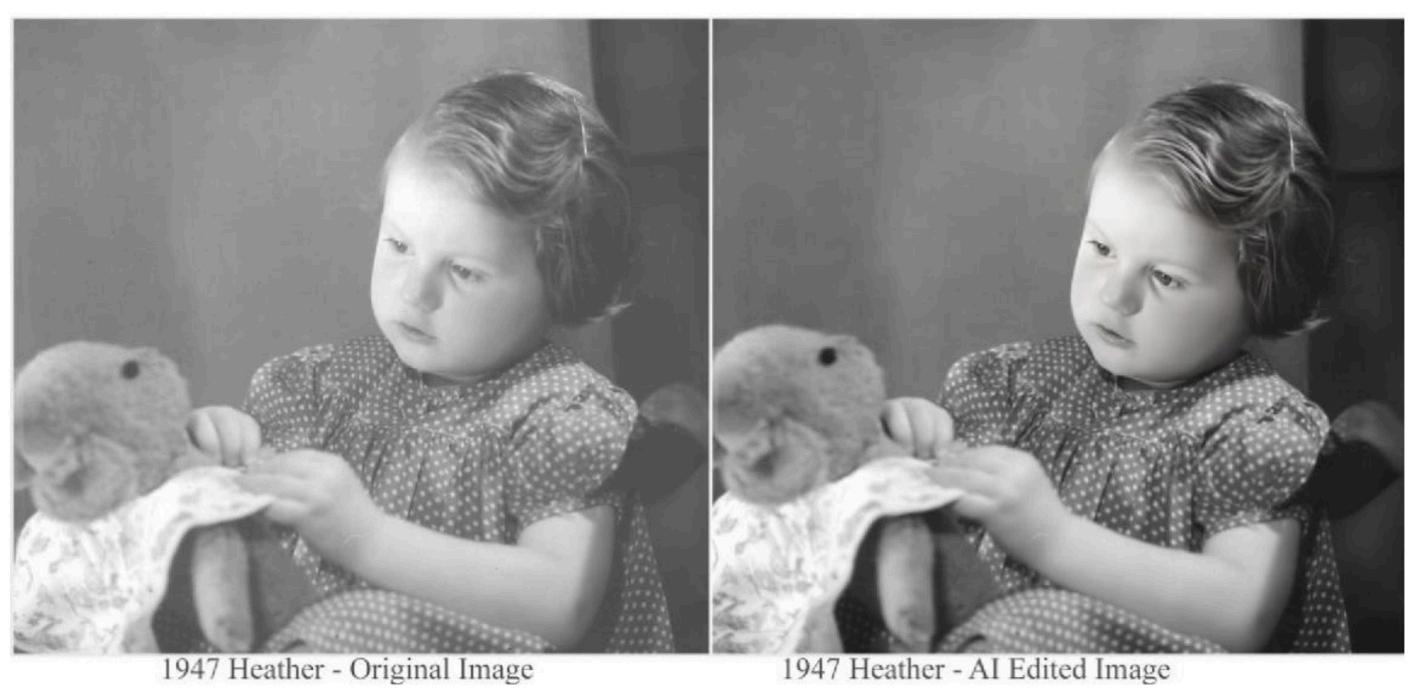
UNVEILING THE LATEST INNOVATIONS IN AI-DRIVEN PHOTOGRAPHY WITH NEWS & VIEWS FROM OUR ROVING REPORTERS !
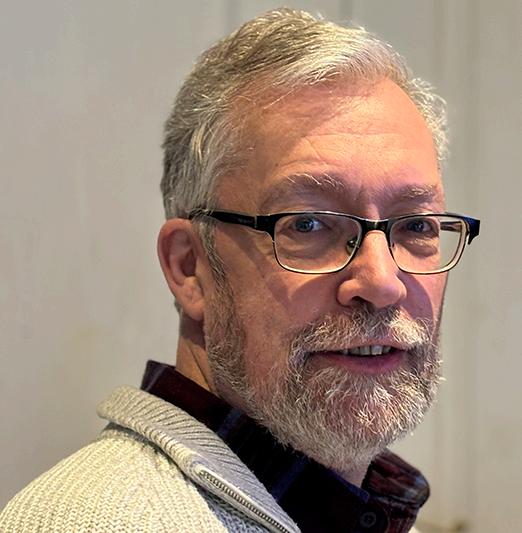
“Sarah – is it really you”?
Updating my “Photography in an AI world” talk is an almost weekly occurrence for me, such is the pace of change in this fascinating space. I recently came across a post from the World Health Organisation – not probably at the very top of my mental list of entities at the bleeding edge of technology. However, they proved me wrong!
The WHO have just introduced S.A.R.A.H. – a female AI spokesperson (spokesthing?).

They call her (it?) a digital health promoter. As you watch, SARAH talks to you, her lips synced with the words so that her face looks pretty realistic as she talks. But SARAH is linked behind the scenes to a data set of information on various conditions such as smoking, mental health and healthy living. And she can answer questions that you ask verbally – no typing needed - so once she’s done her intro and asked you what you want to talk about, you just start a conversation, and then she answers. There’s a bit of lag between your question and her answers as she converts your speech into text, sends it to her AI chatbot, gets and answer back and then converts that text back into speech, but it’s amazing to see how her face matches up with what she’s saying.
She’ll only answer questions related to the areas she is trained in, and although fairly good, she’s clearly still an artificially generated avatar, but the technology is 80-90% there in terms of her looking like and sounding like a real person.
This is going to be a pervasive technology that we see more and more in the coming months and years. It will disrupt all kinds of areas, as up to now, if it’s on the telly we tended to believe it – this is definitely no longer the case. The way we consume information is going to change – and how will we know what and who to trust when it’s impossible to tell from either voice or video that you are not in fact talking to a real person?
What’s the old Chinese curse – may you live in interesting times…. Well we are certainly in the thick of interesting times at the moment…
The URL to access S.A.R.A.H. is https://who-en.digitalhero.cloud/landing/index.html or you can scan this QR code with your phone to get to her that way:

Find out how to start – or continue – your Distinctions journey: Each of the pages below includes handy links to guidelines and genres for distinctions, assessment dates, and a “how to apply” document:
• Licentiate (LRPS)– the process for LRPS is changing – see below for more details.
• Associate (ARPS)
• Fellowship (FRPS)
Changes from 1st January 2024: Applied and Portraiture genres have been merged into Applied for ARPS and FRPS. Book submissions (not photo books) are in the process of changing, so make sure you include the correct number of images as specified. No way of identifying the author may be included in these books.
The LRPS application process has been changed and will now use an online application system for digital submissions – no more prints or books will be assessed. The are currently no details of these new assessment procedures on the RPS website, but yo new online process is still being developed,and will be announced sometime in May. Keep an eye out on the Facebook group (see below) for announcements.
ARPS and FRPS submissions will continue to support print-based assessments.
The Photo book genre, available for all distinctions, has its own special guidelines and submission process (as opposed to an LRPS, ARPS or FRPS submission in book form). You can find out more here: Photo books. You might also like to see a talk hosted by Stewart Wall which is both informative and inspiring.
Some genre-specific hybrid advisory days for both Associate and Fellowship levels at RPS House are still bookable – limited spaces; book here.
To help you prepare, you can request a one2one portfolio review – an online session with a panel member appropriate to your genre/distinction. See this page for more information: How to book a one2one
There has been some confusion over what happens next – someone from HQ will find you an advisor and put you both in touch to arrange a date and to send images/ presentation plan. This can take time depending on how many volunteer assessors in your genre or at your level are available, and you are advised to make your request at least 4 months before an assessment.
Some regions are offering Advisory Days online and in person. Look out on our Facebook group or for broadcasts from your regional group for details, or use this link https://portal.rps.org/s/event-listing and click the ‘Advisory Day’ button at the top –best to disregard the filters at the left hand side which often seem to find nothing or hide some events!
You can generally attend as an observer if you aren’t ready to step up yet (usually advertised a week beforehand on the Facebook group). In addition, some Chapters and Regions offer online Distinctions Study Groups. You can find these by searching the RPS website (these are in random date order including past dates, so you do need to be patient).
You can send your booking forms to distinctions@rps.org or by post to head office. As for advisory days, you can sign up to observe an Assessment Day (in person or online) tickets for assessments – currently free.
And don’t forget, as well as projected and printed images, you can also apply for a Film, Digital and Multimedia Distinction at any level, and also a written Research Distinction: Film And Research. The Research page on the website has been updated, and more changes are scheduled for other pages.
If you missed any of the Distinctions Live talks, you can catch up here. (Also accessible via the RPS Distinctions channel on YouTube.) This talk from Stewart Wall gives advice on how to gain your Licentiate.
The Facebook Group RPS Distinctions **Official Group** is still growing after 3 years, with 5000 members. It includes news from HQ, links for observer places at assessments, and posts celebrating distinction successes to inspire you. It’s a civilised venue to ask questions, share your successes – and disappointments – and ask for critique or expert advice on your proposed portfolio.

If you aren’t sure which genre or level to apply for, you can post 6 images (plus your SOI if appropriate) and request moderator advice.
Accolade, which celebrates Digital Imaging members’ distinction successes, is useful for insight into the process in many different genres and at all levels. The last Issue 13 of Accolade has just been published. Future distinction stories will be featured in DI ONLINE instead (back numbers also available on the DI Website)
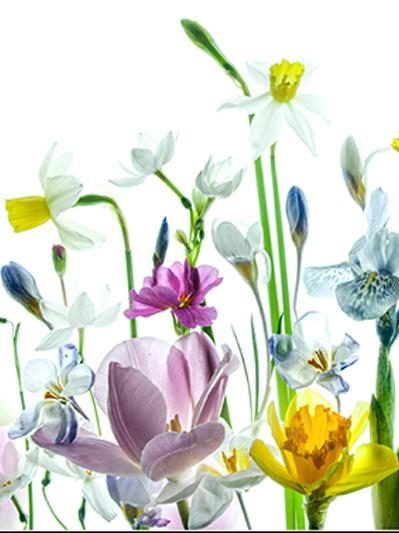
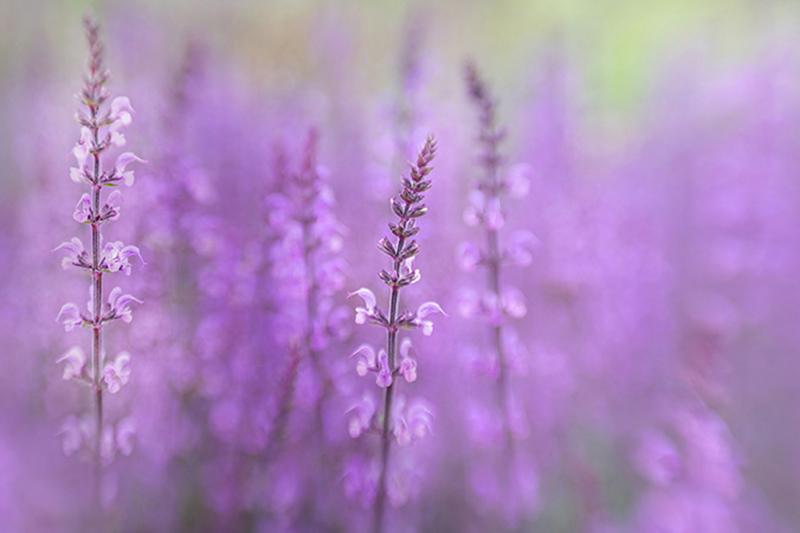
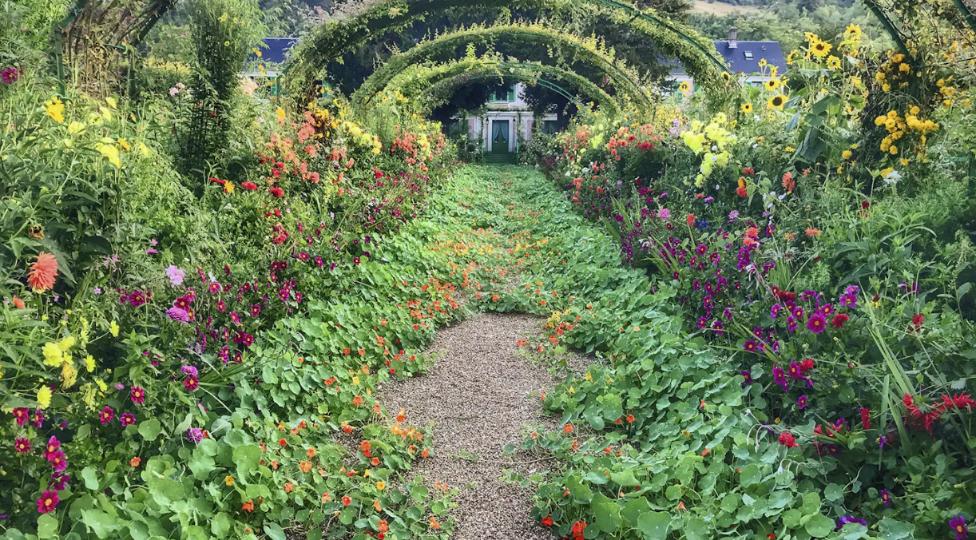
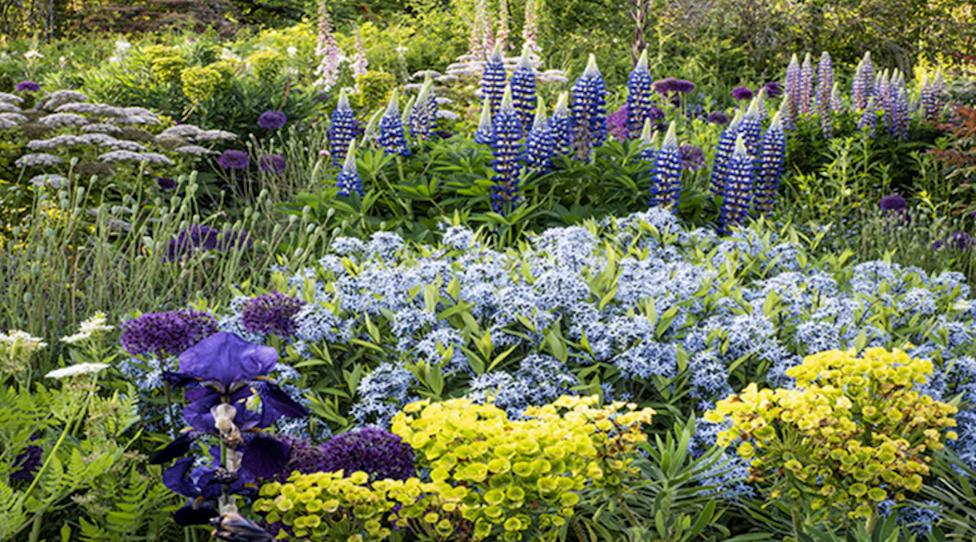
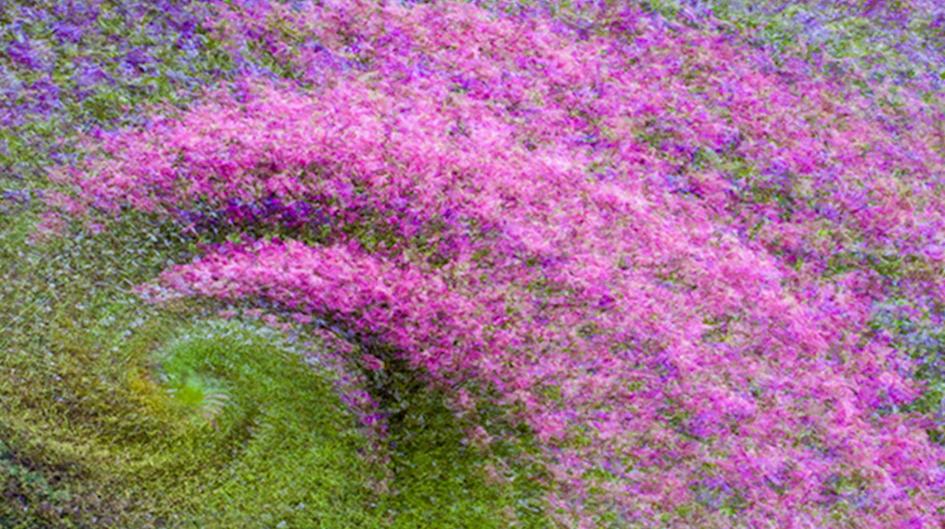
Chasing the Seasons with Polina Plotnikova
June 7
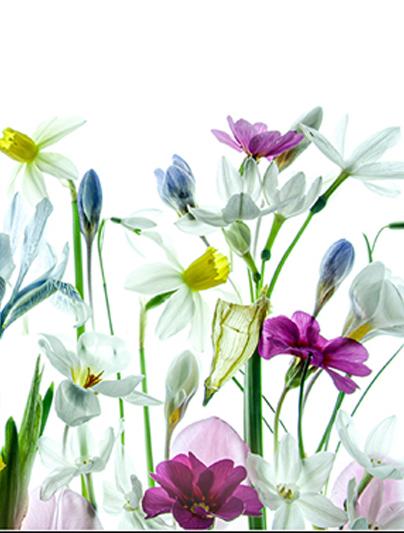
“How to Edit WOW Photos on Your iPhone” with Charles & Melissa Needle
June 7
Participate in the ‘Creative Flower and Garden Appraisal’ with Charles Needle
July 2
Observe the “Creative Flower and Garden Photography Appraisal” with Charles Needle
July 2

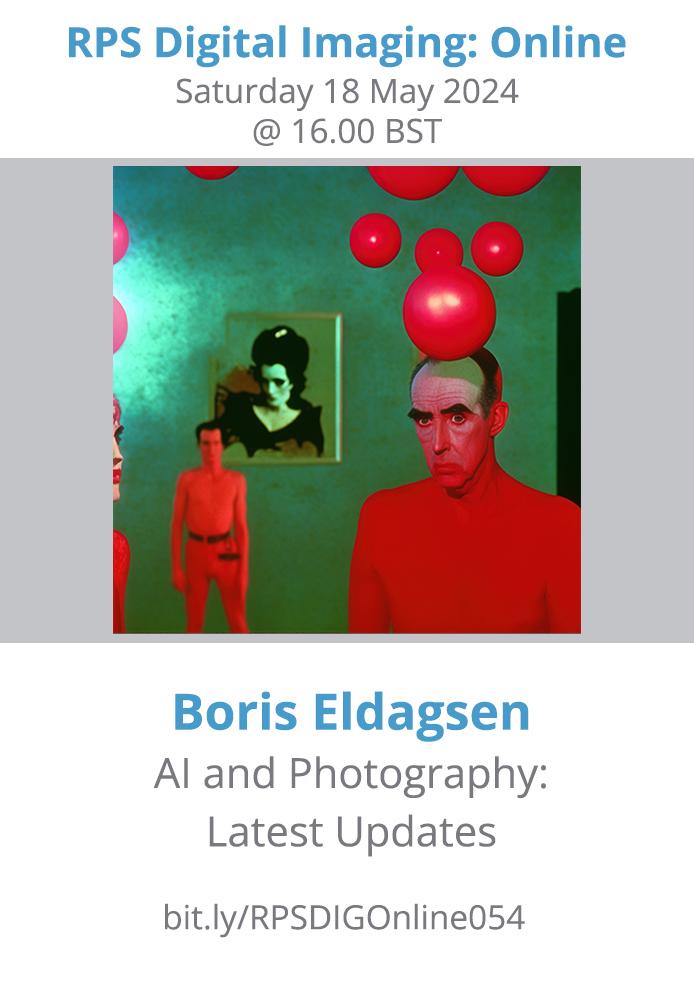

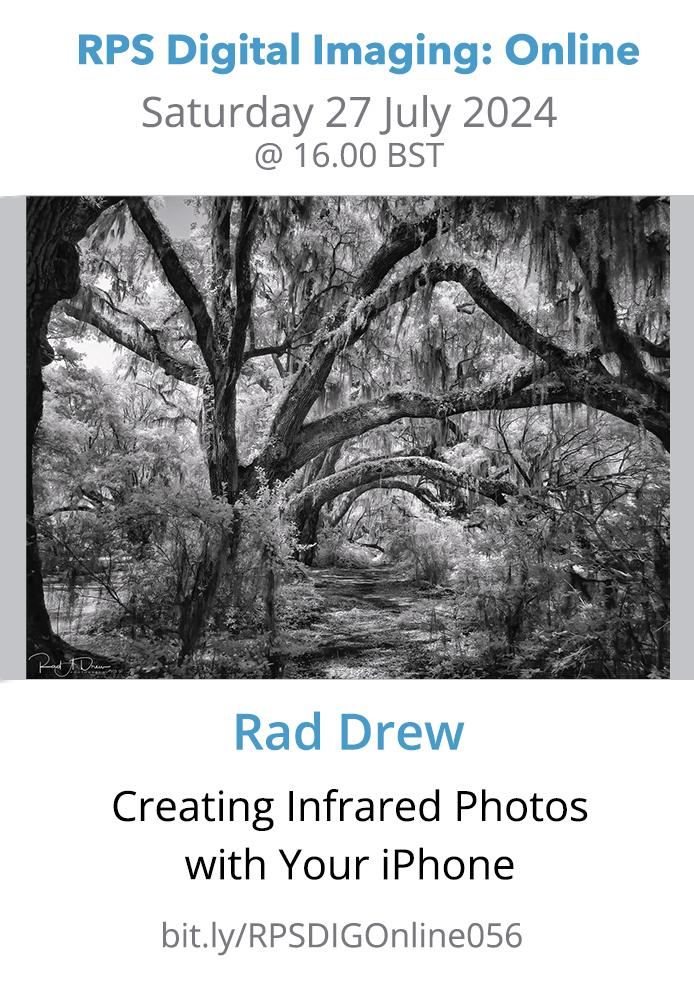
THAMES VALLEY REGION EVENT ADVANCE BOOKING ESSENTIAL as tickets are not available on the day. Book

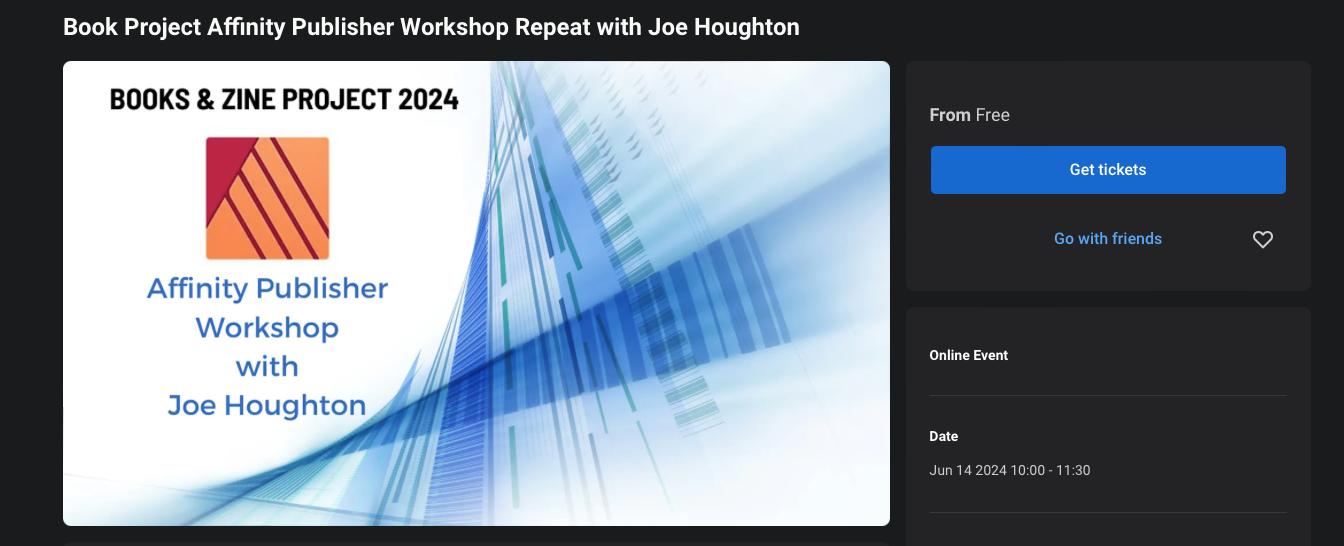
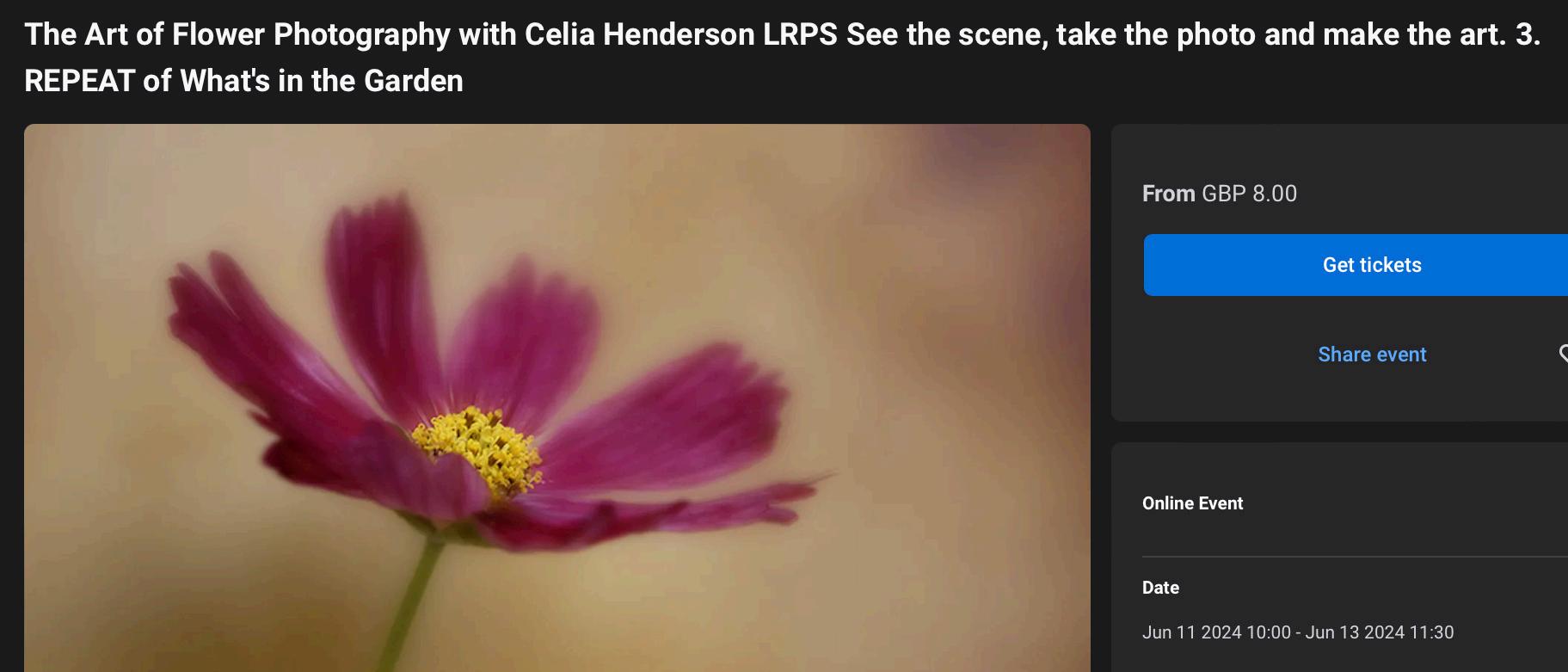
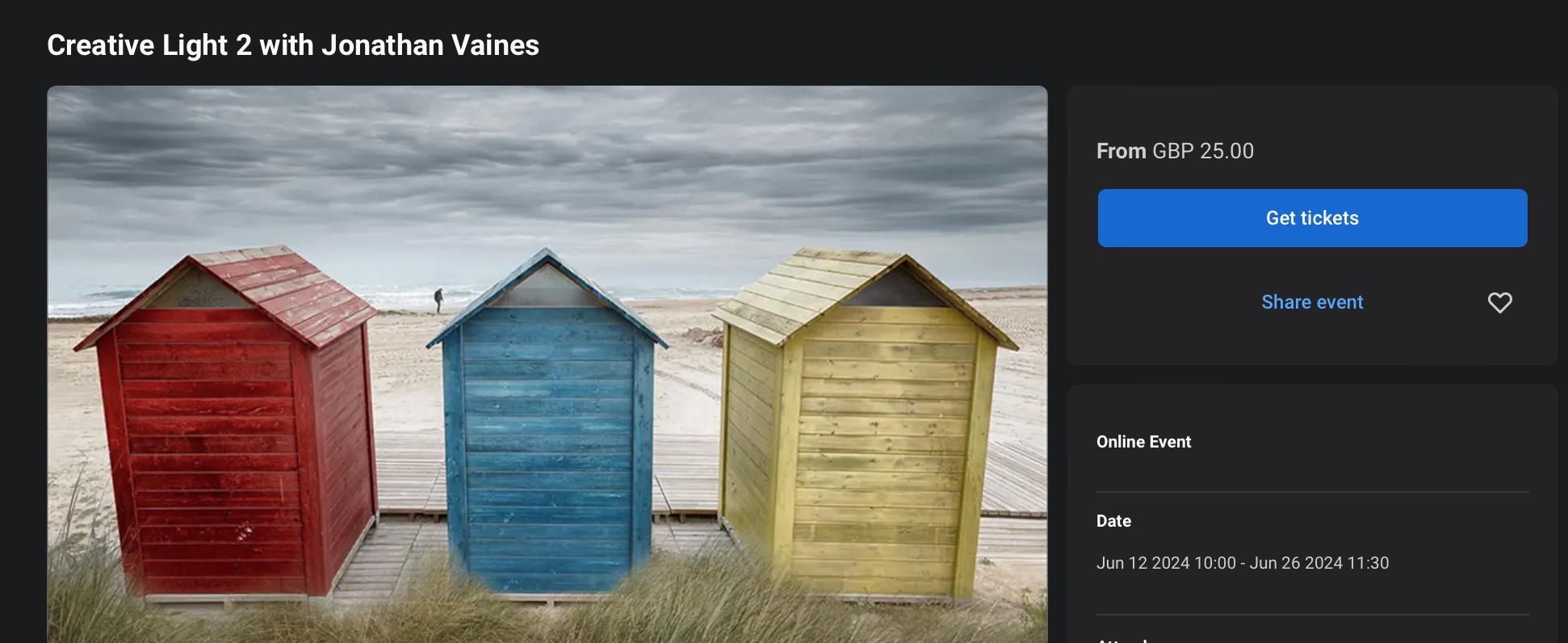
Do visit our webpage
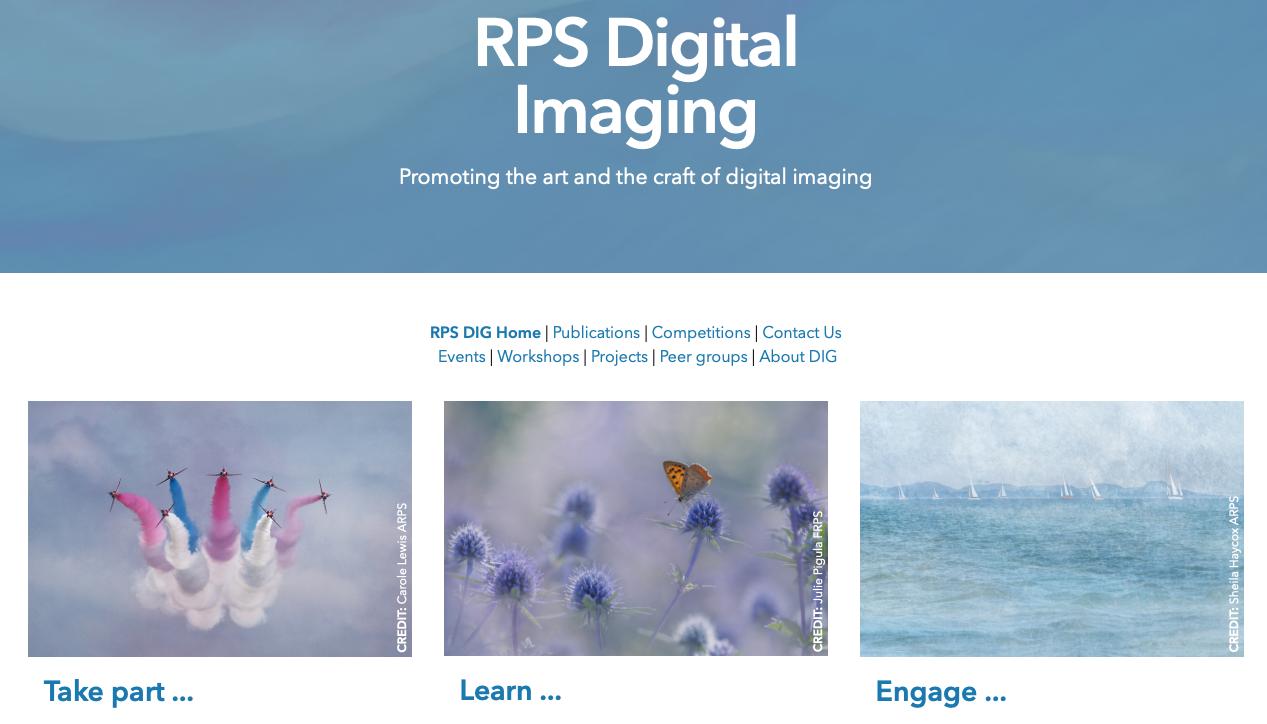
The DIGIT Archive, of issues up to 100 is now open access, HERE However new issues will only be available to view by DI Members
The RPS Digital Imaging constitution can be downloaded HERE
For everyone’s convenience, we include a list of shortcuts to the main Digital Imaging pages at the end of each Broadcast.
You can subscribe to our email Mailing Lists here to hear new announcements: Garden & Plant Photography Workshops Events Monthly Competition